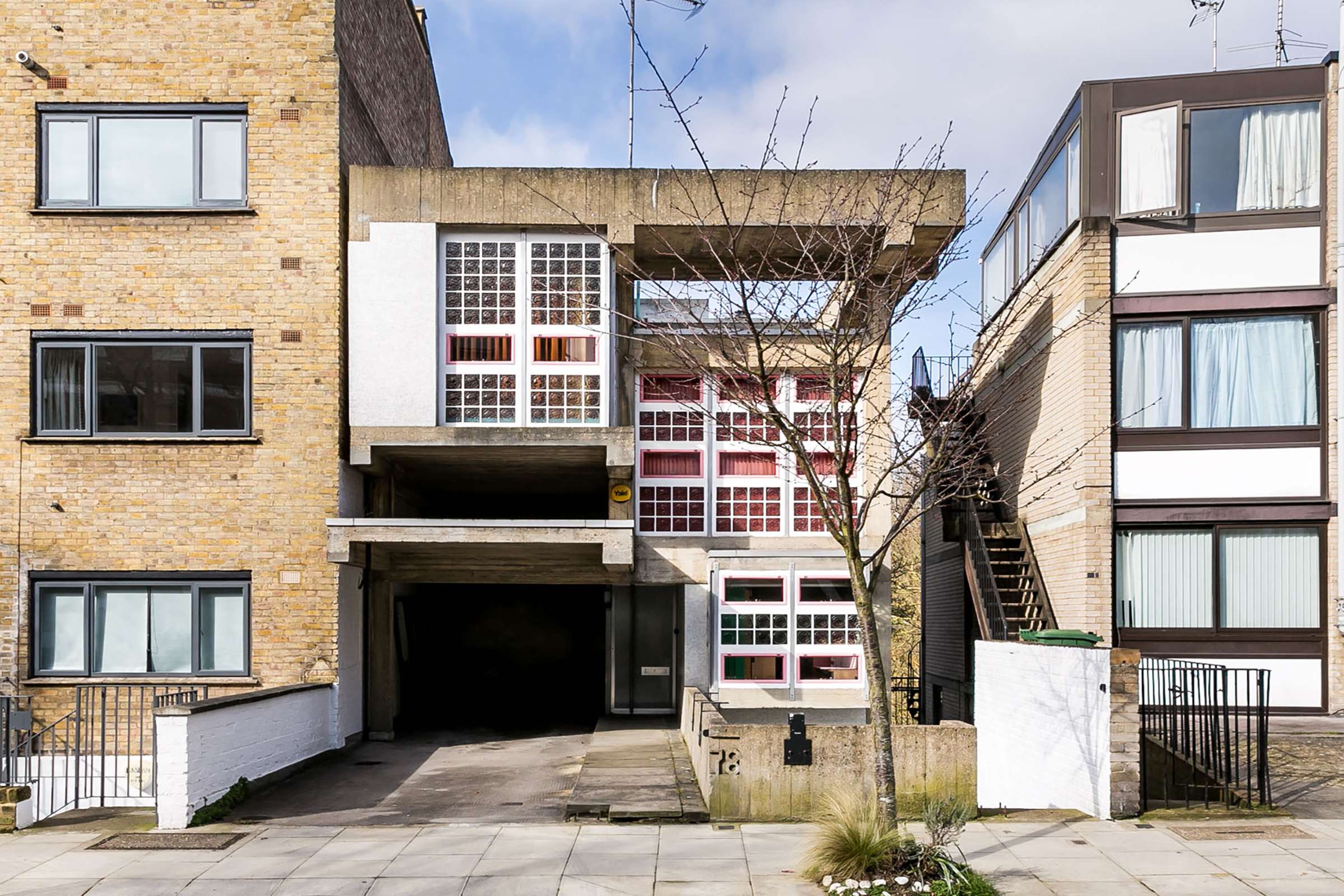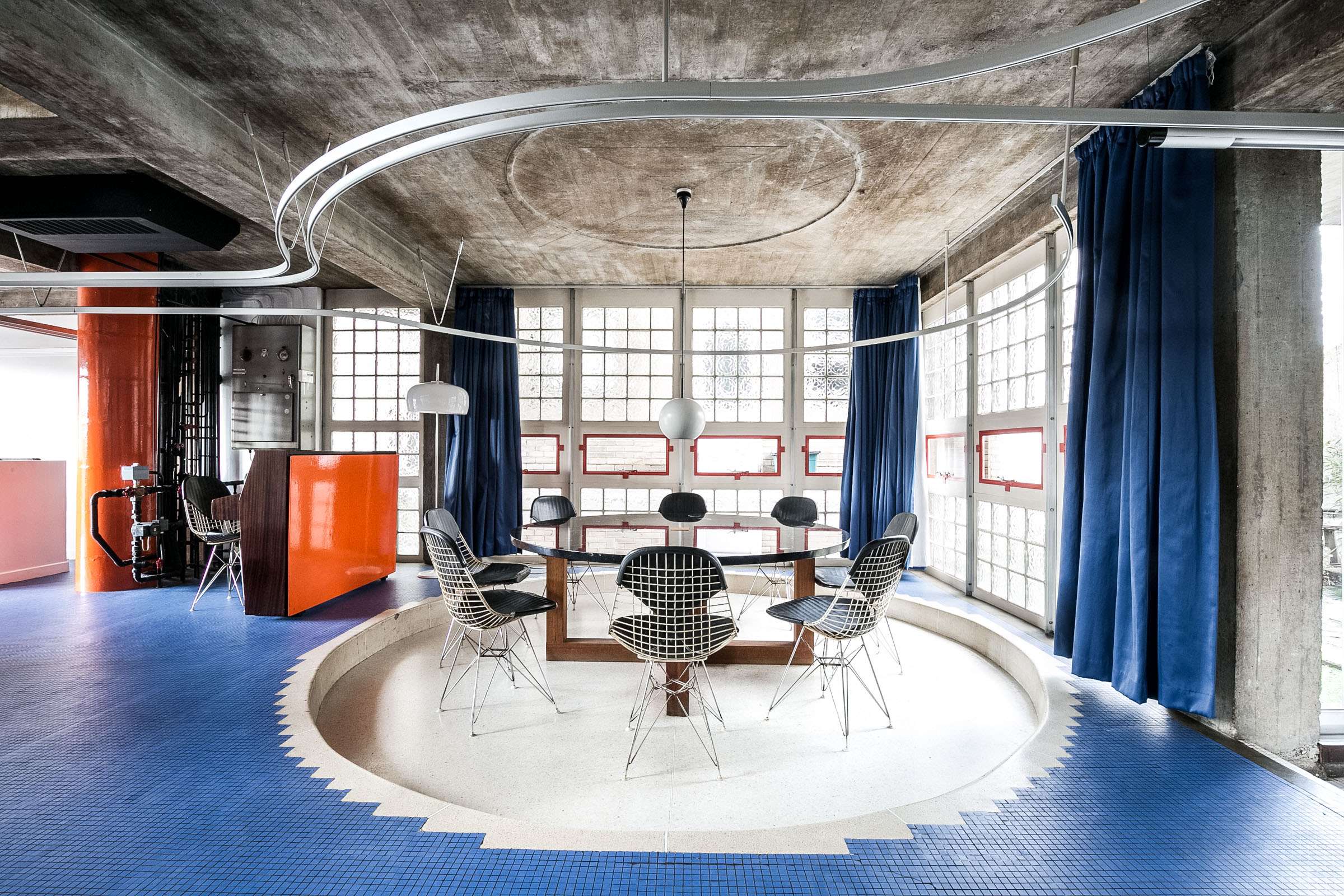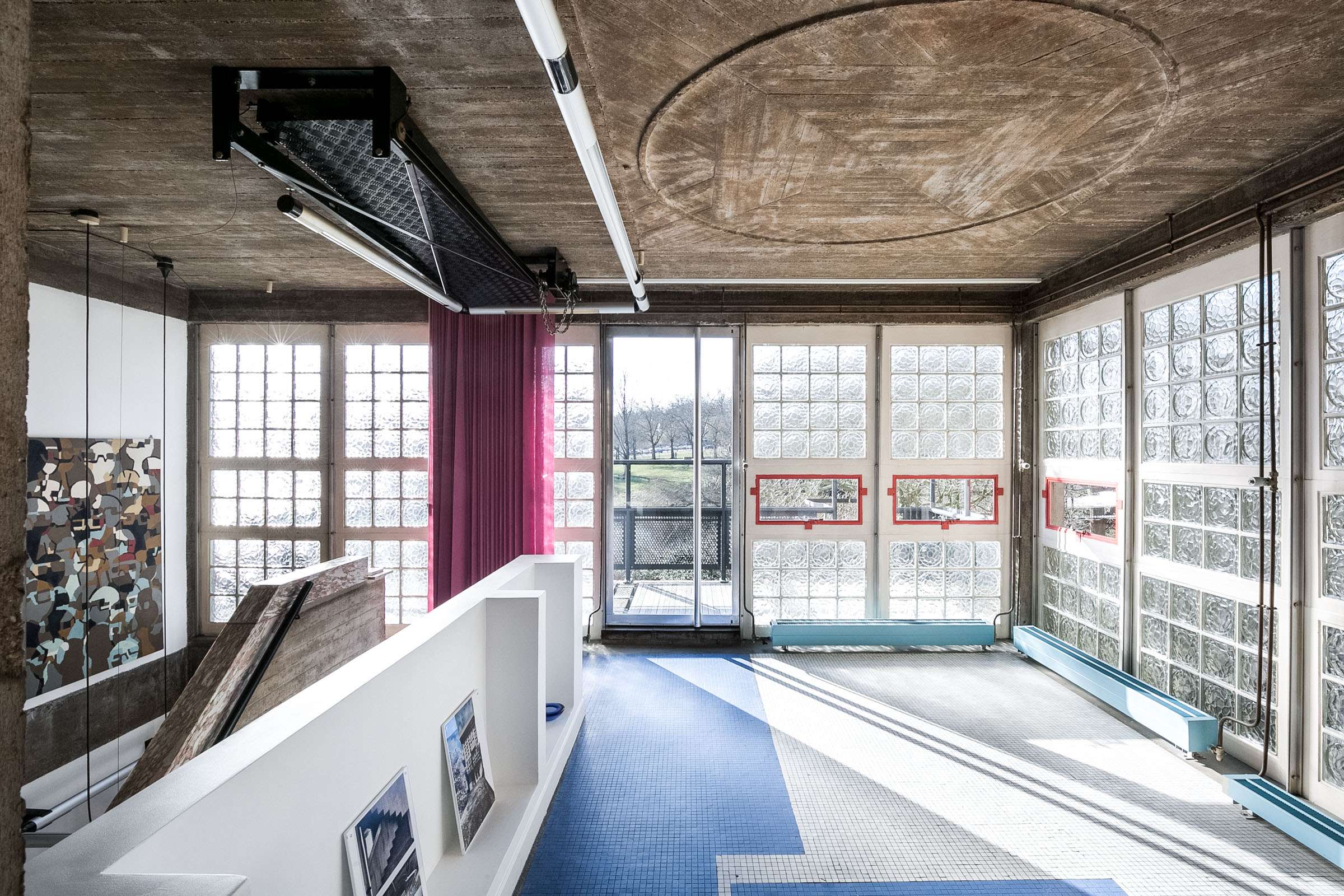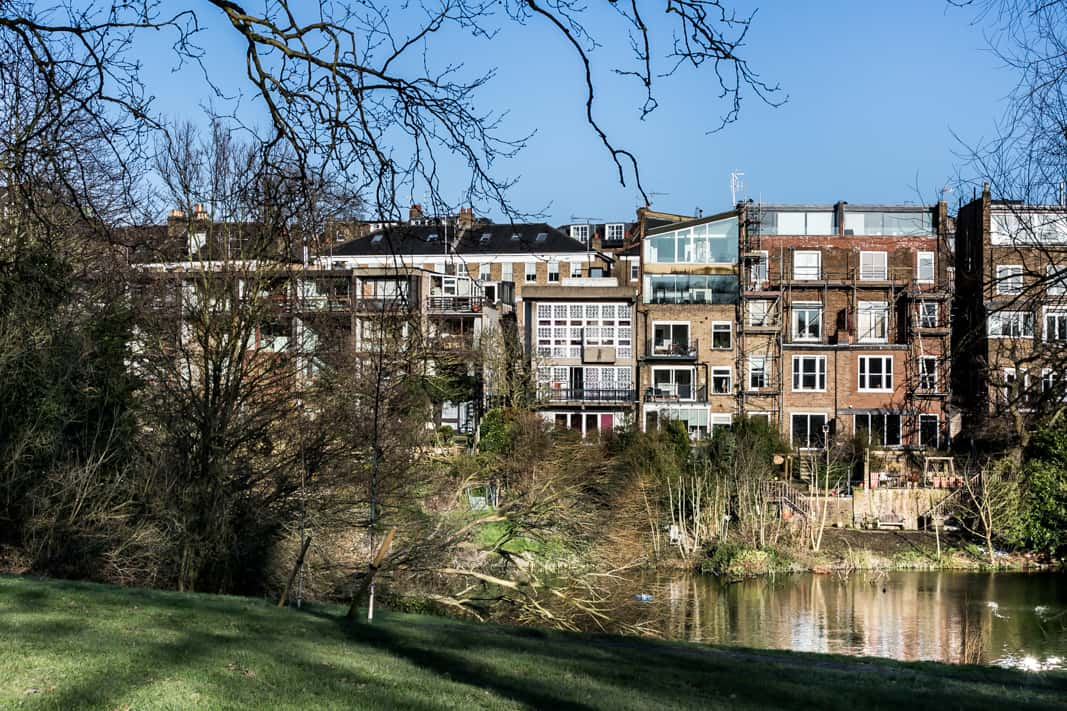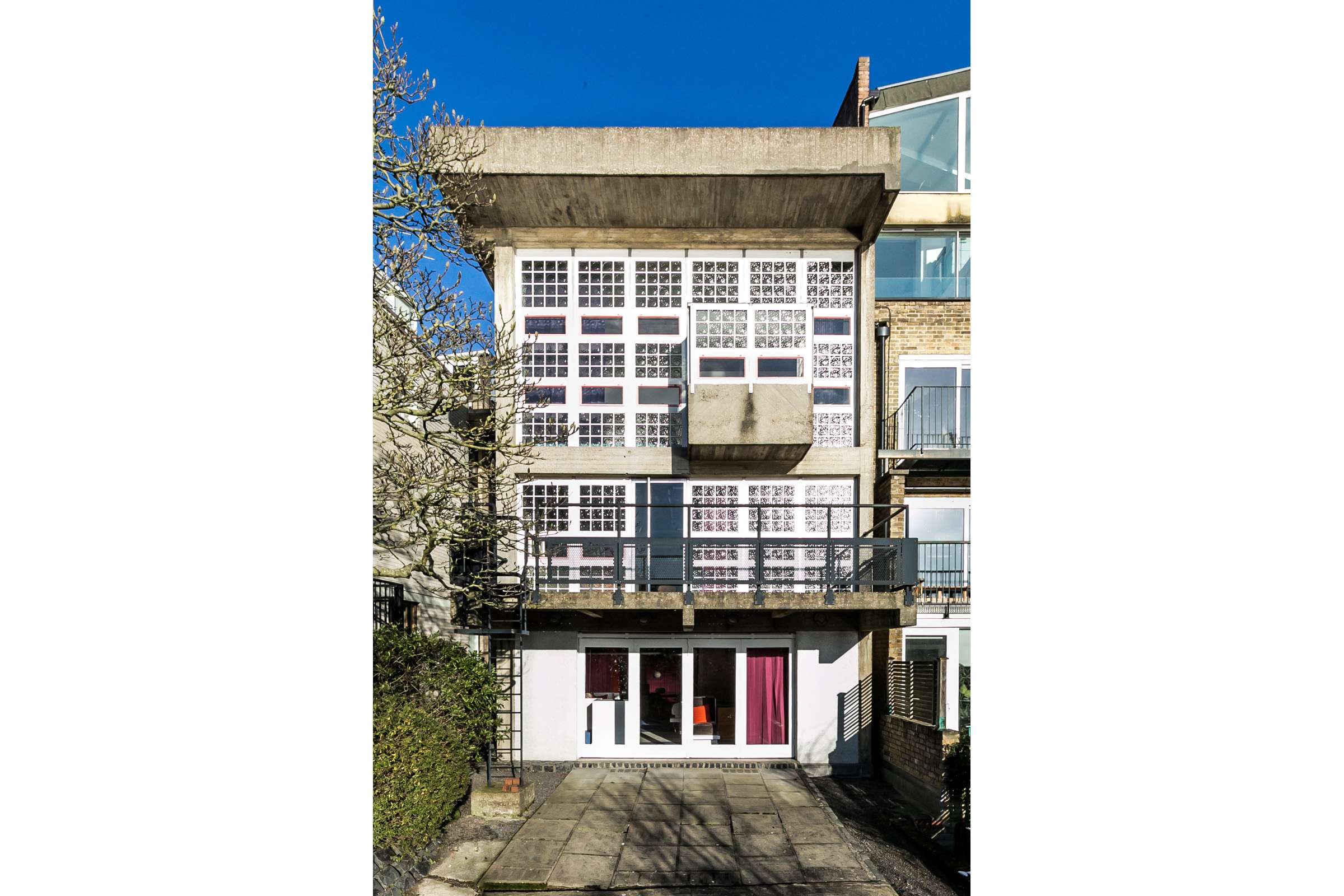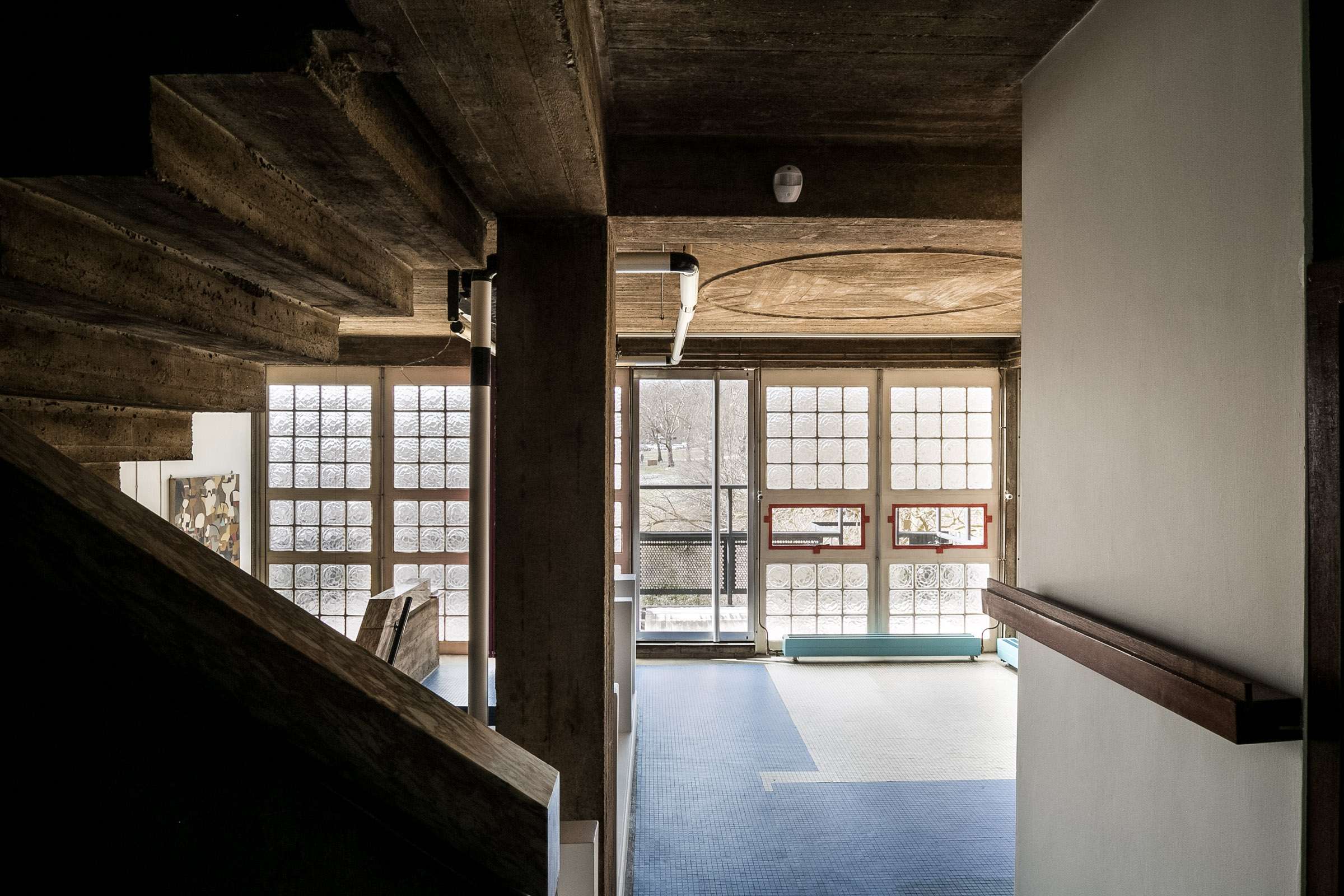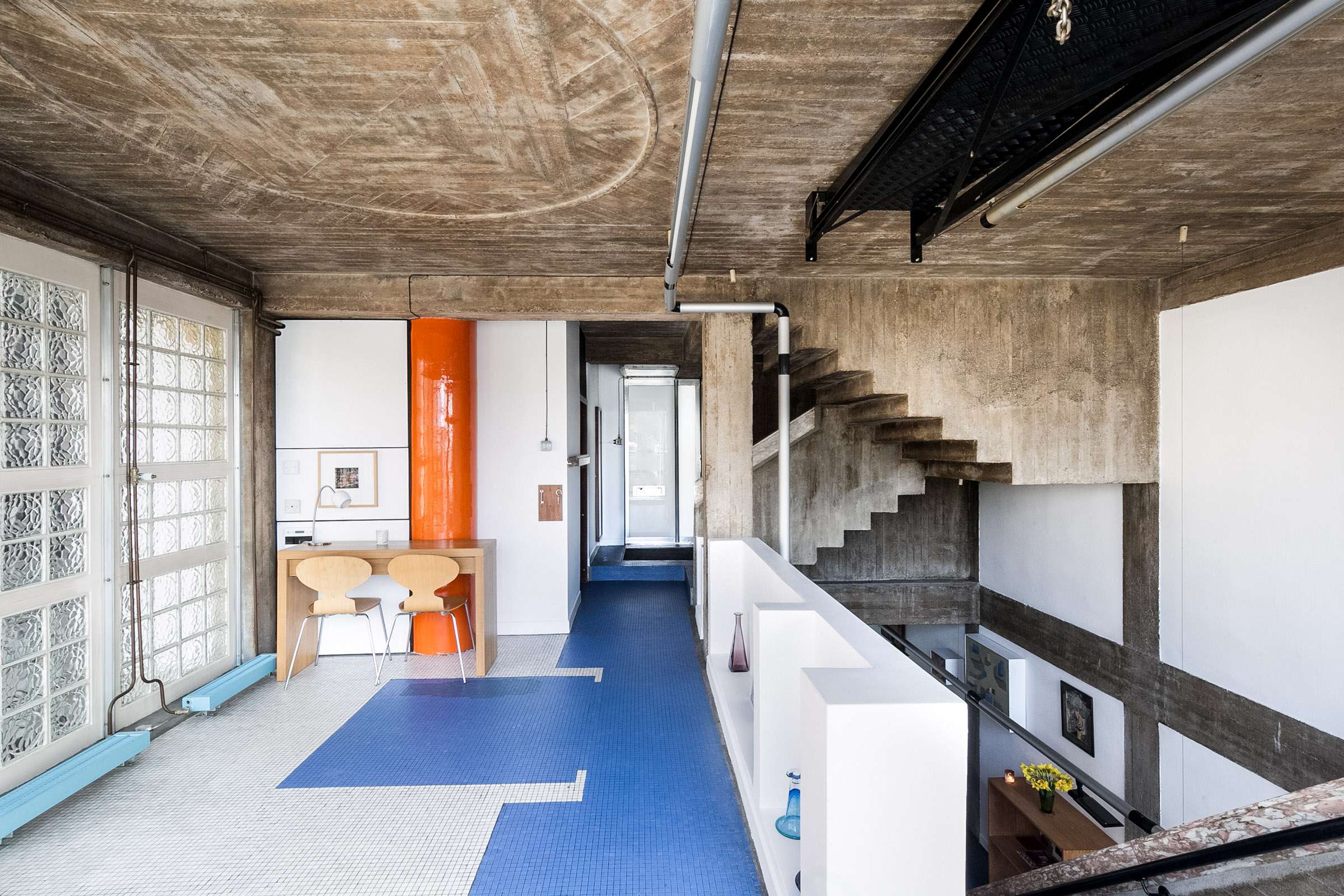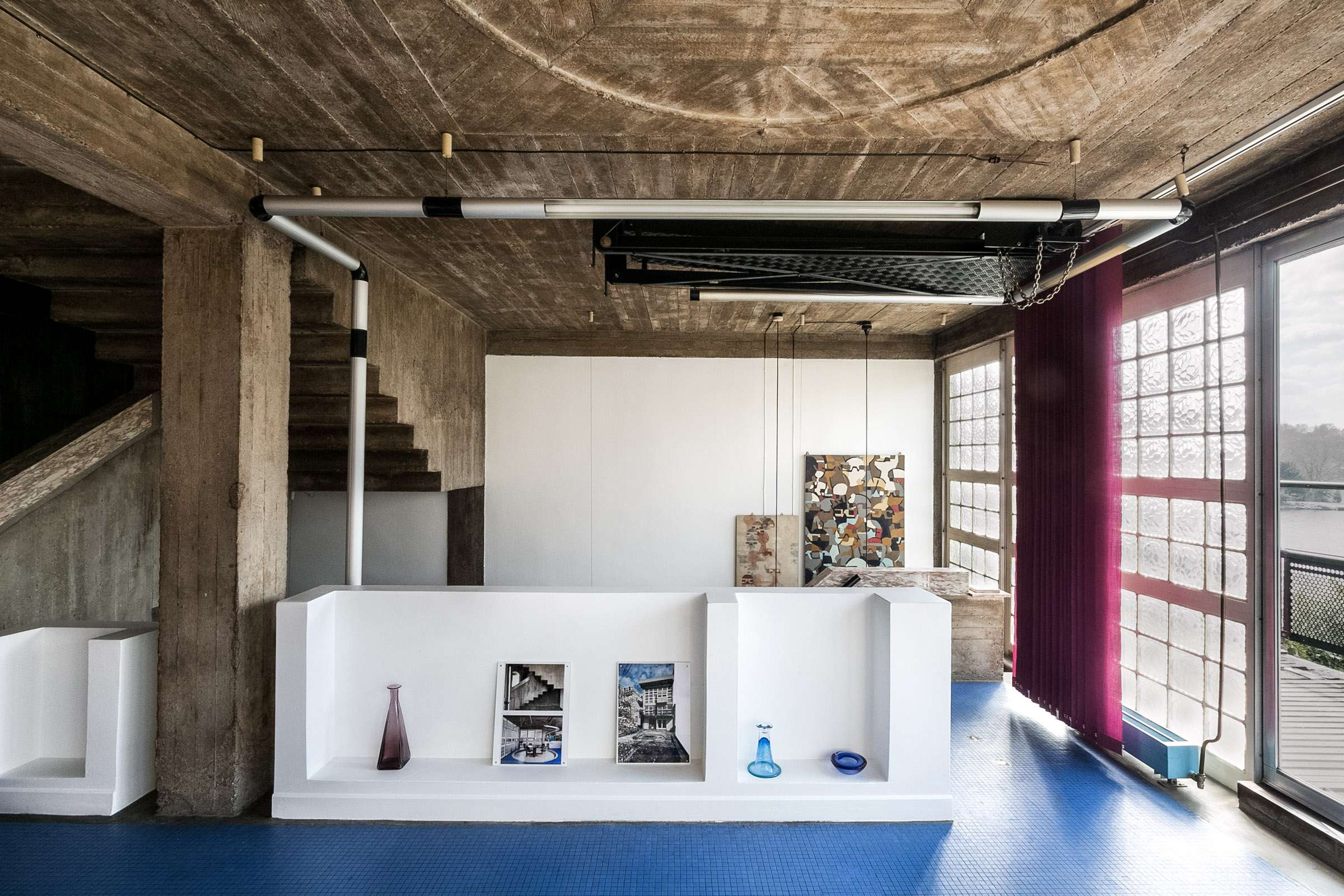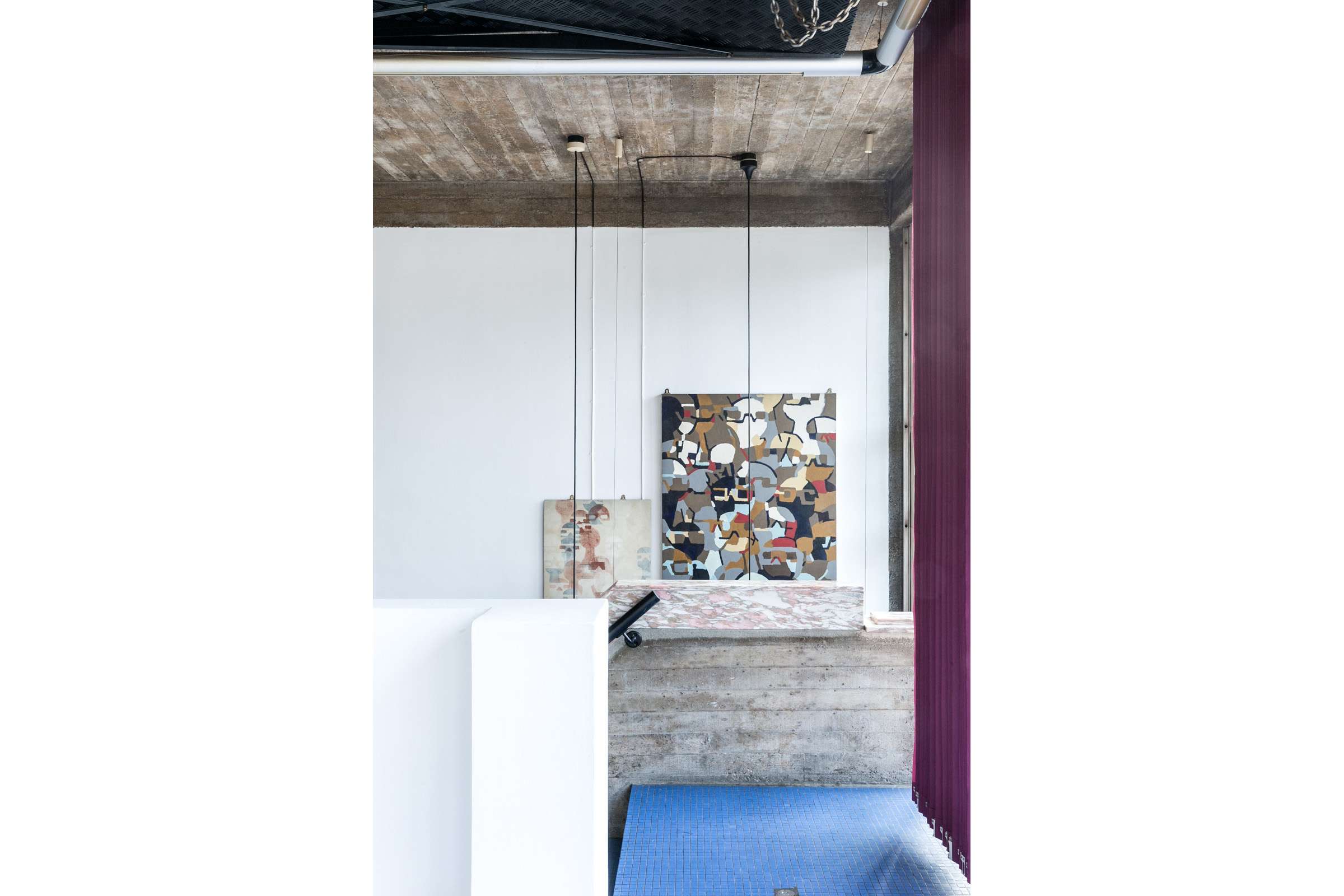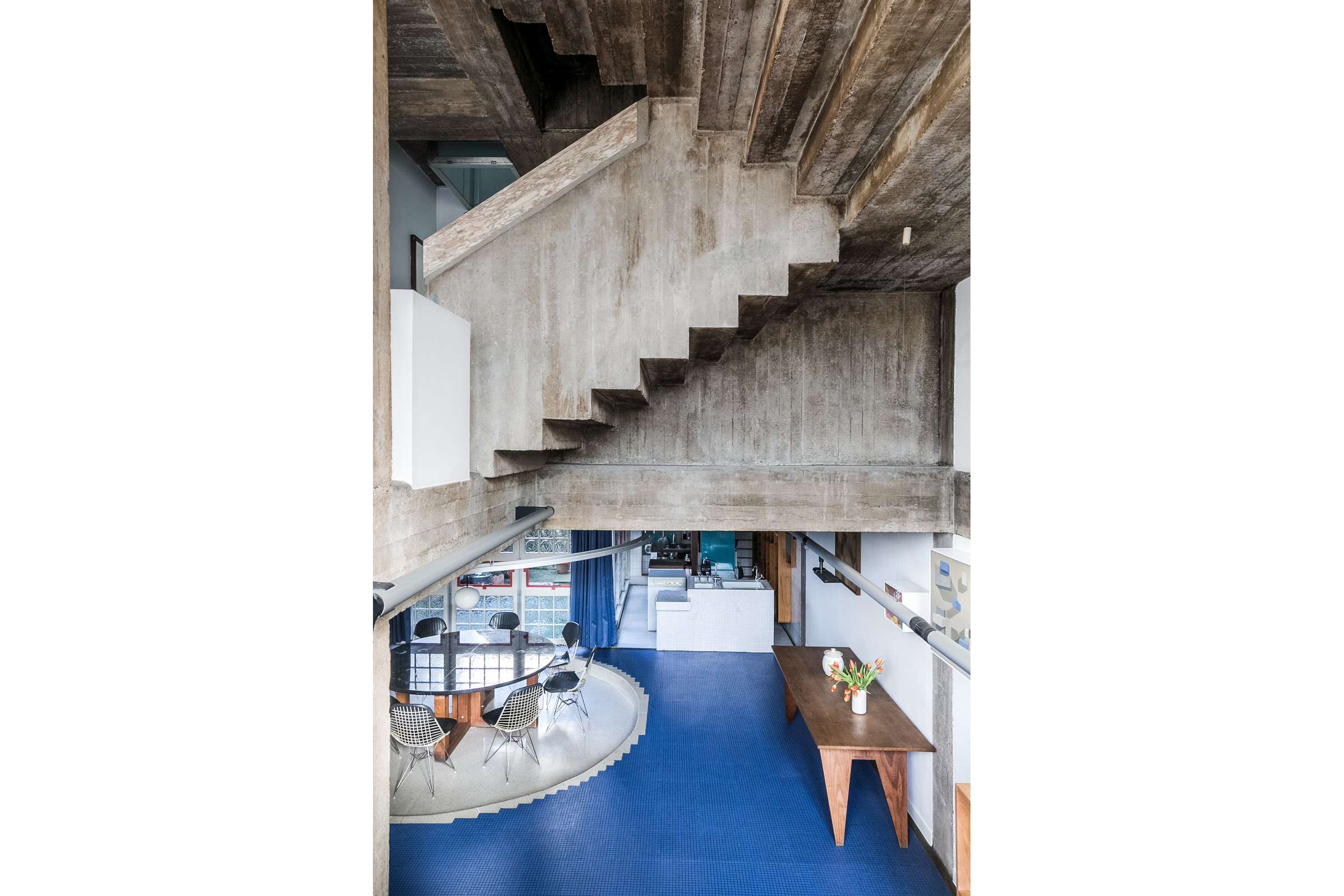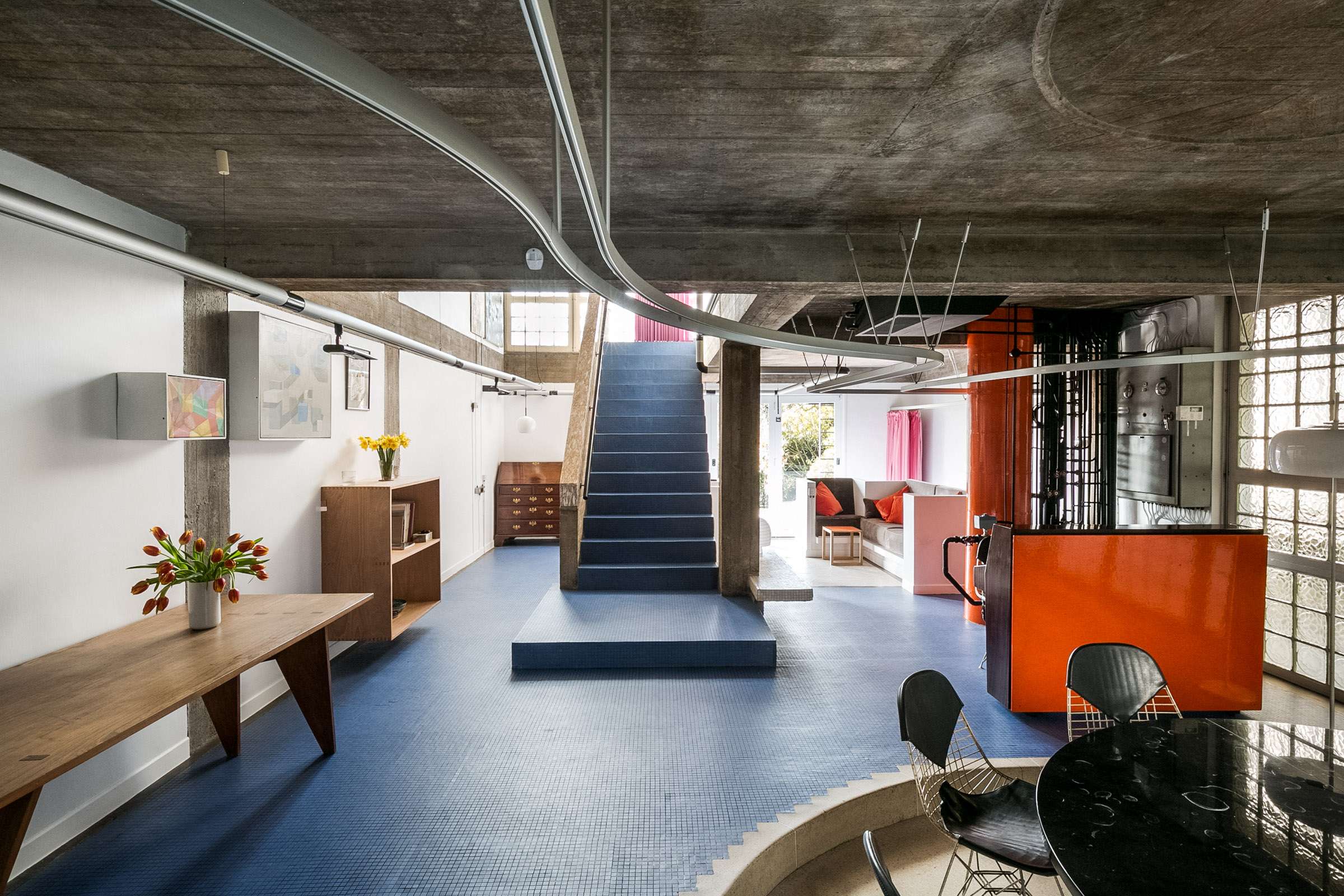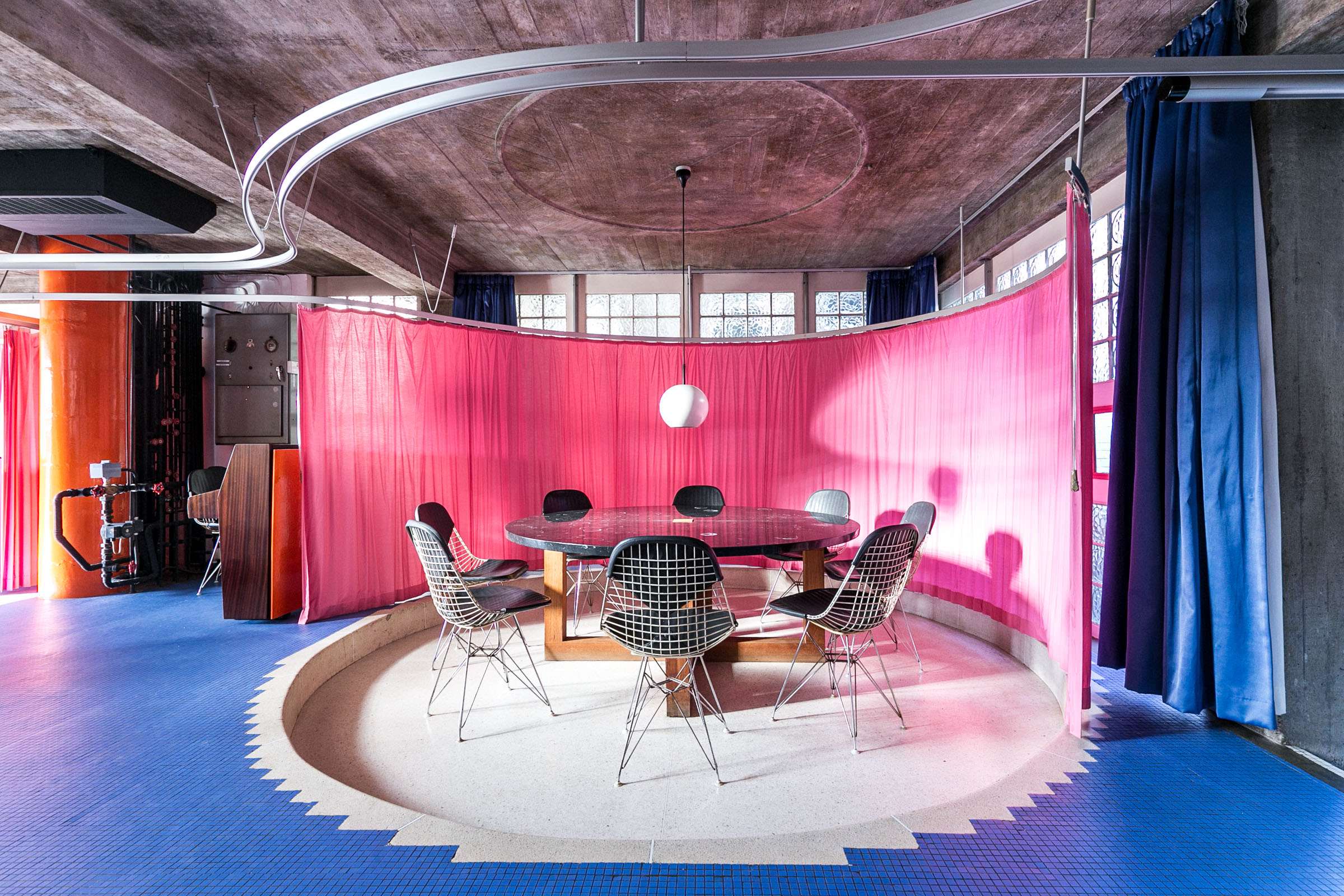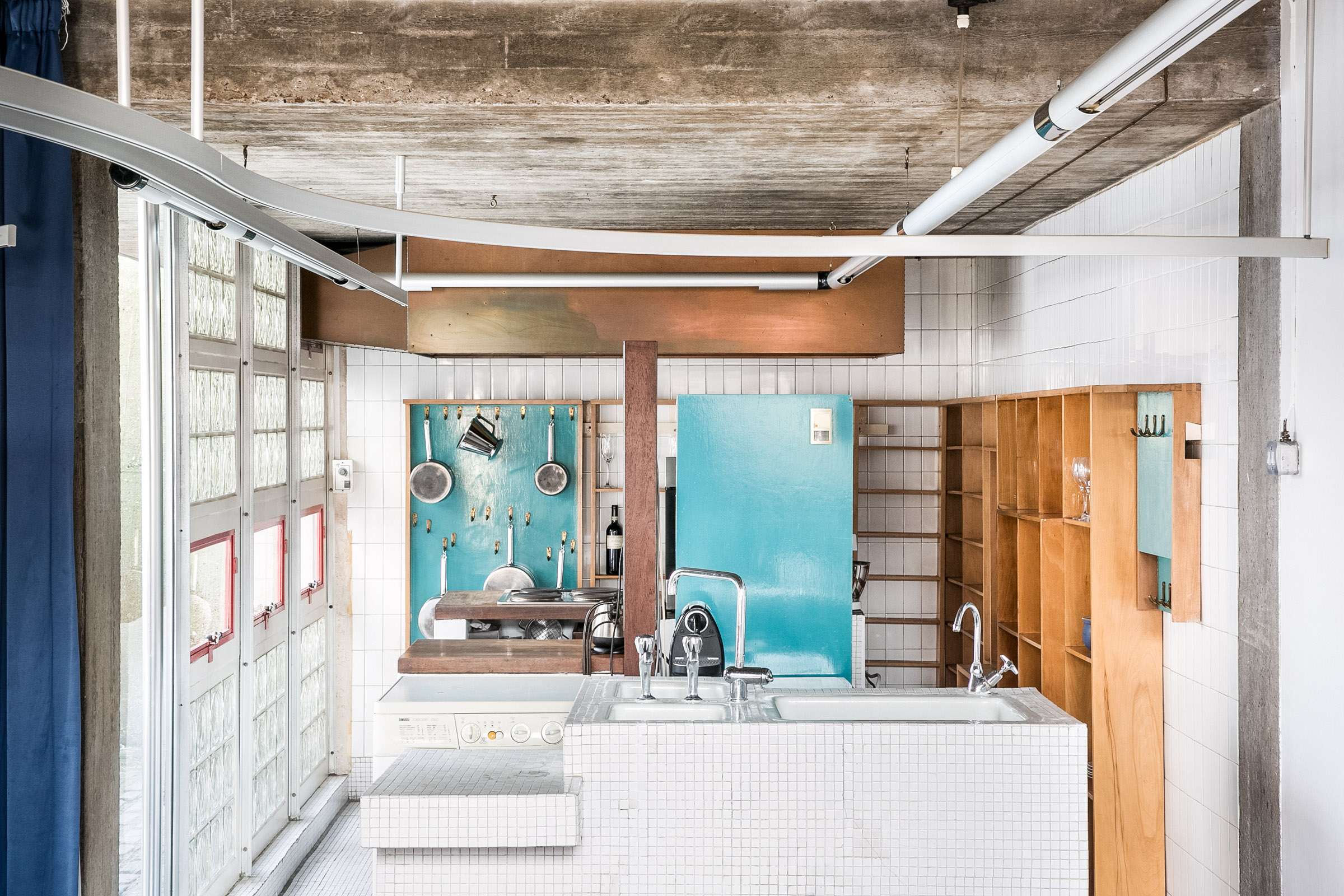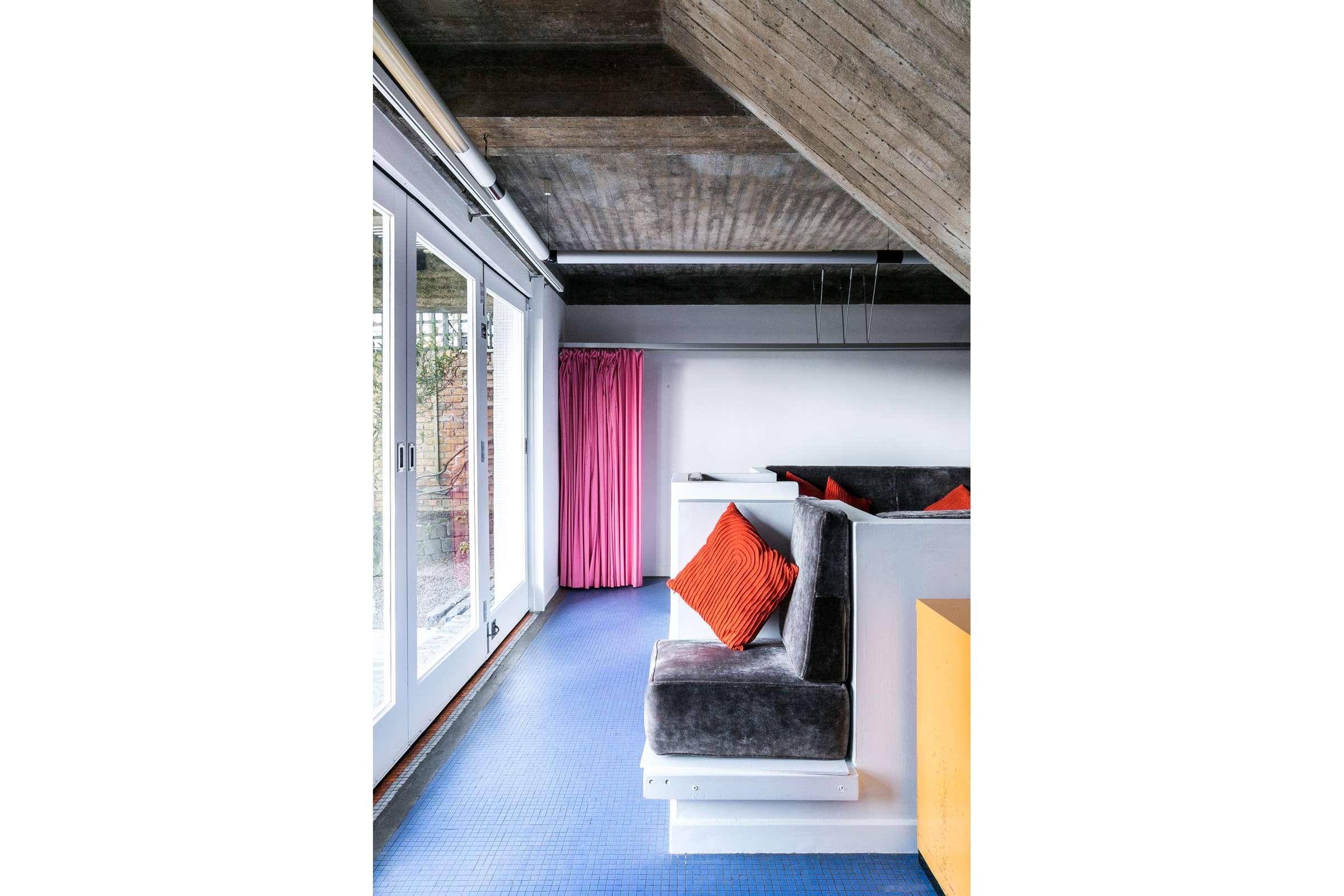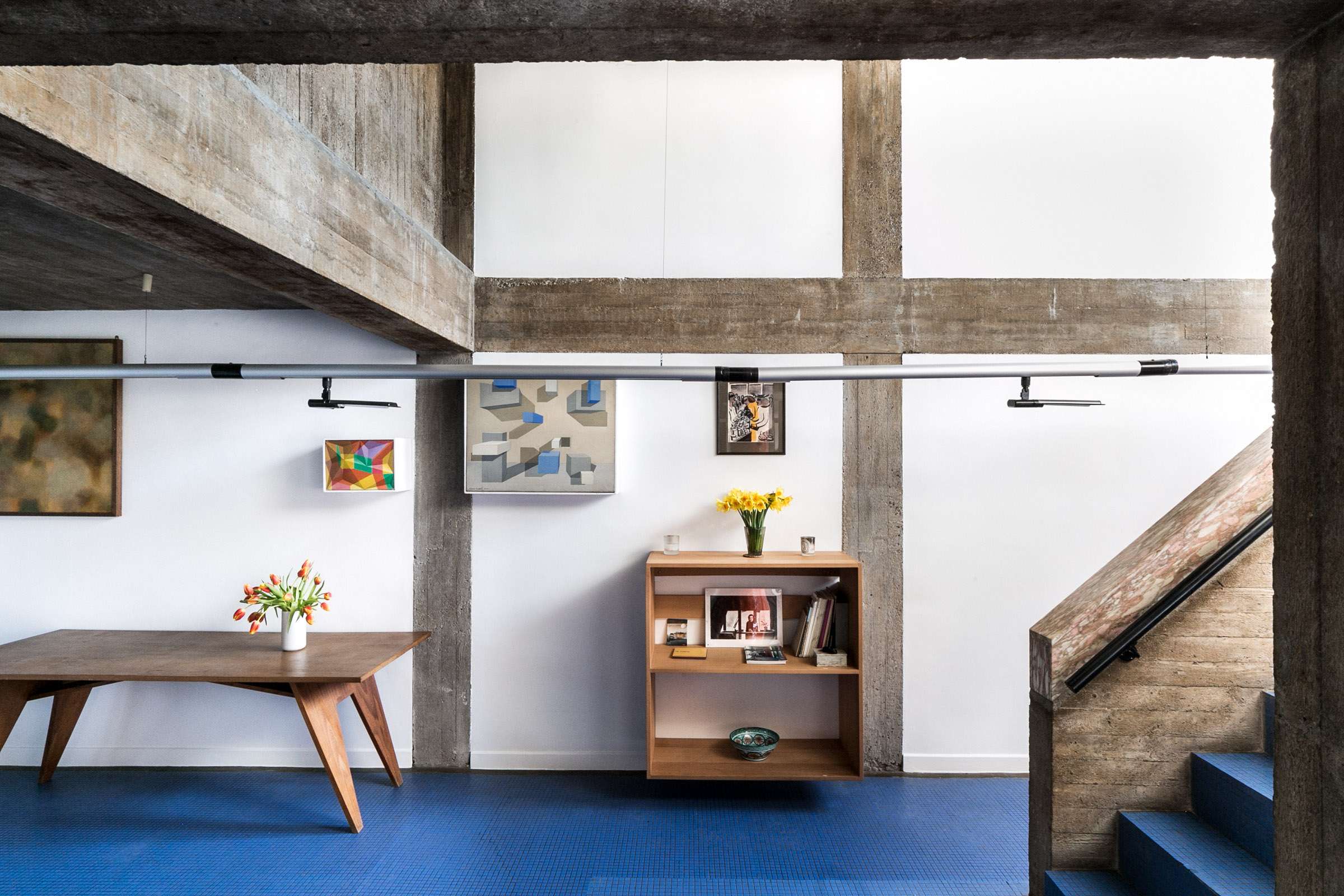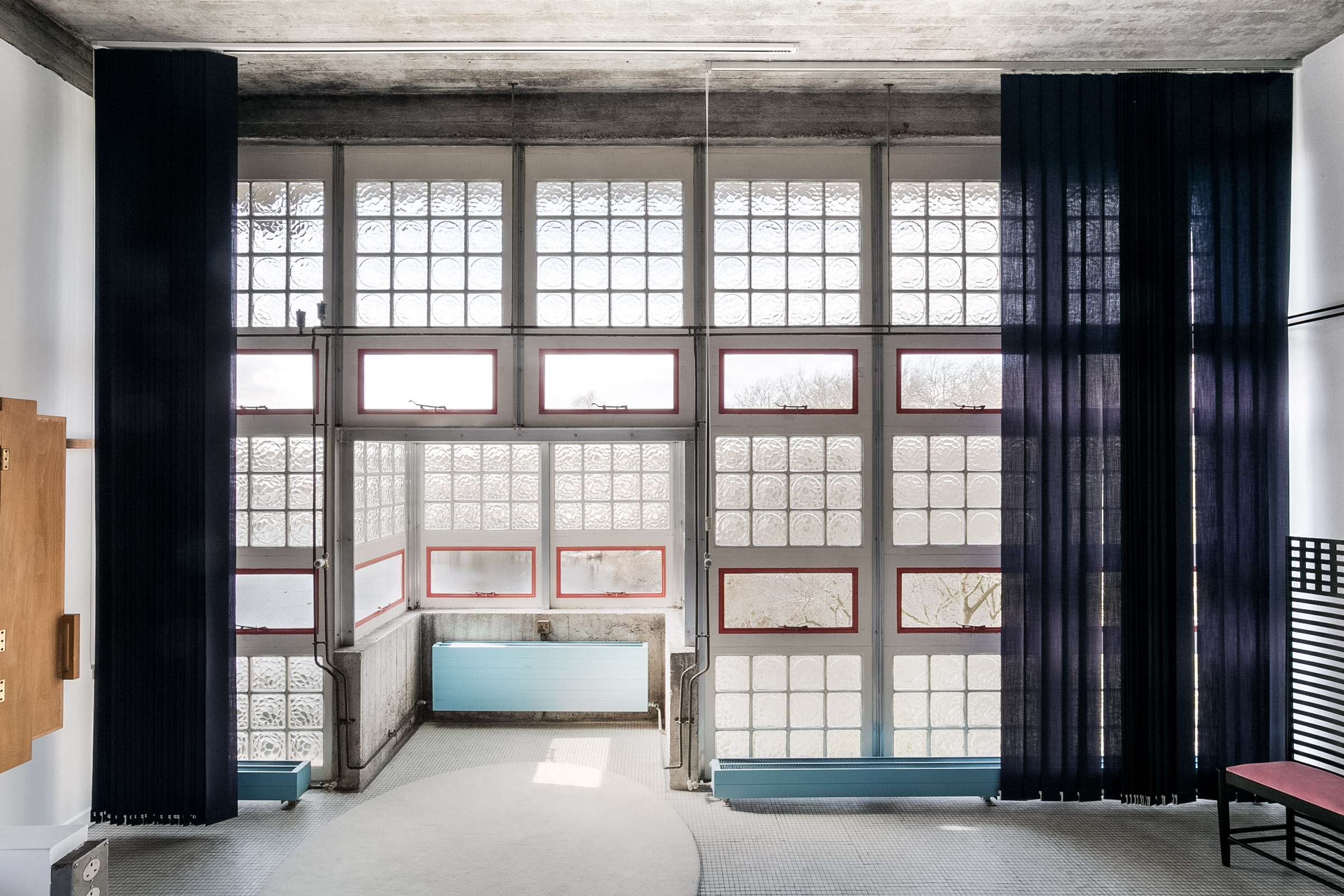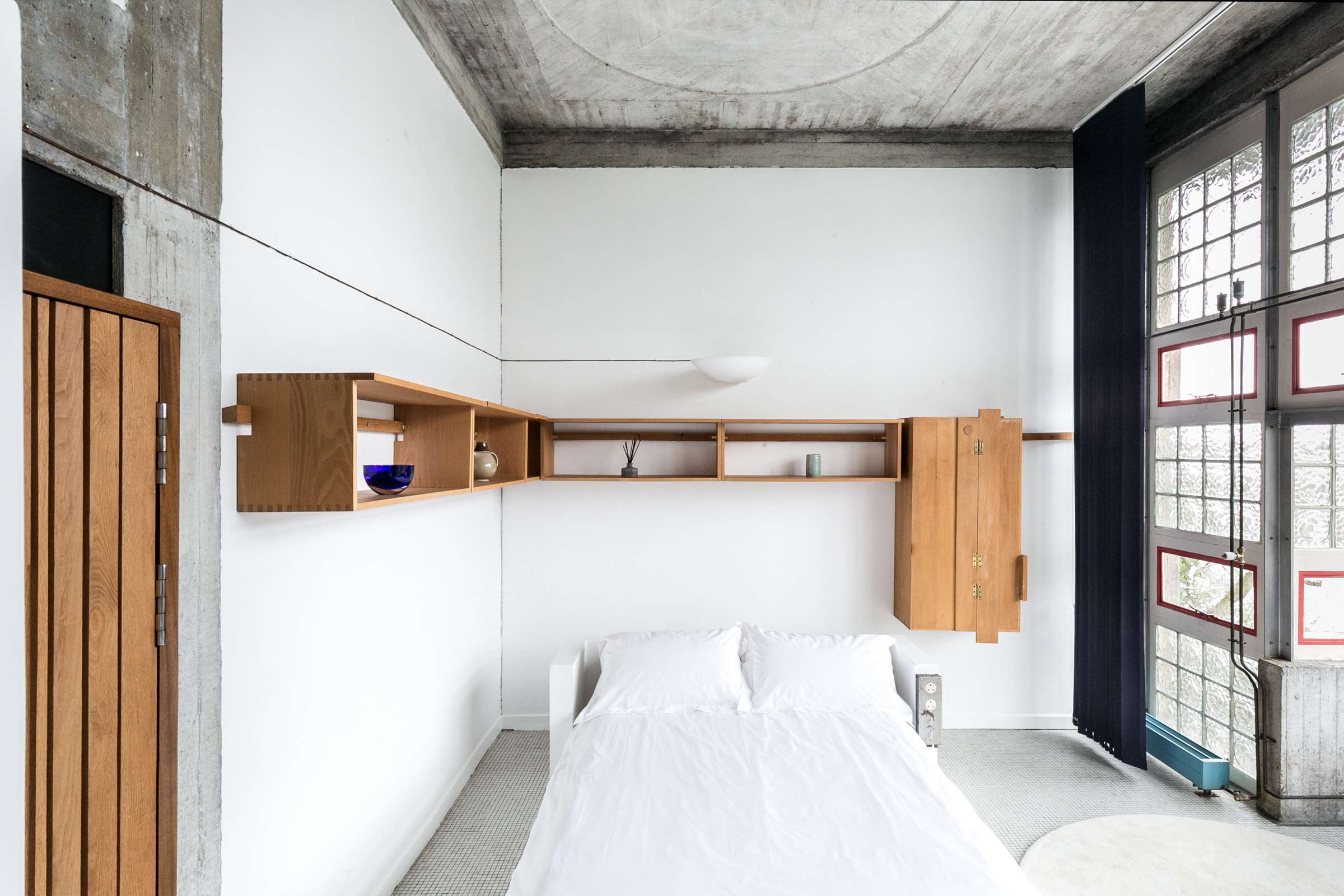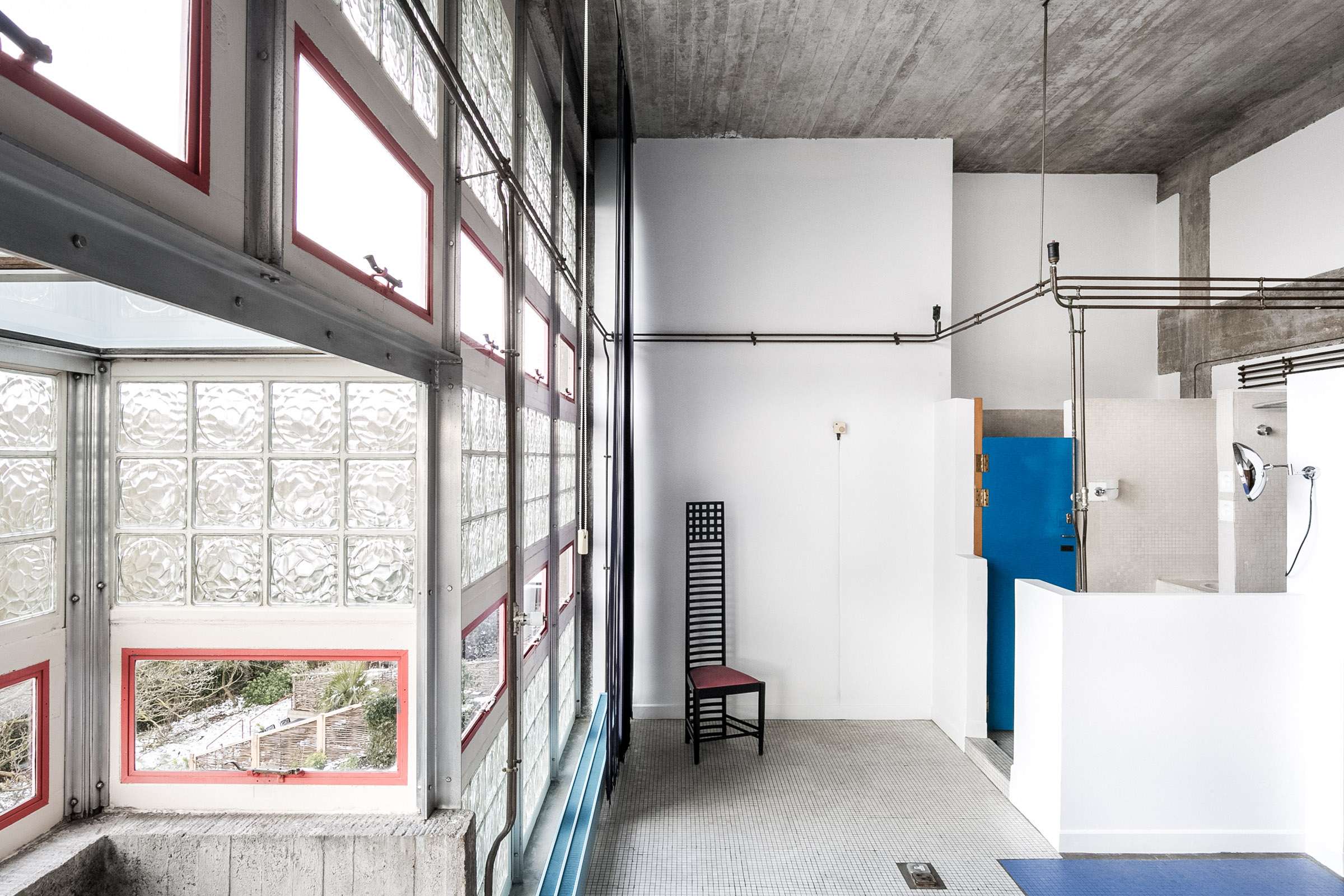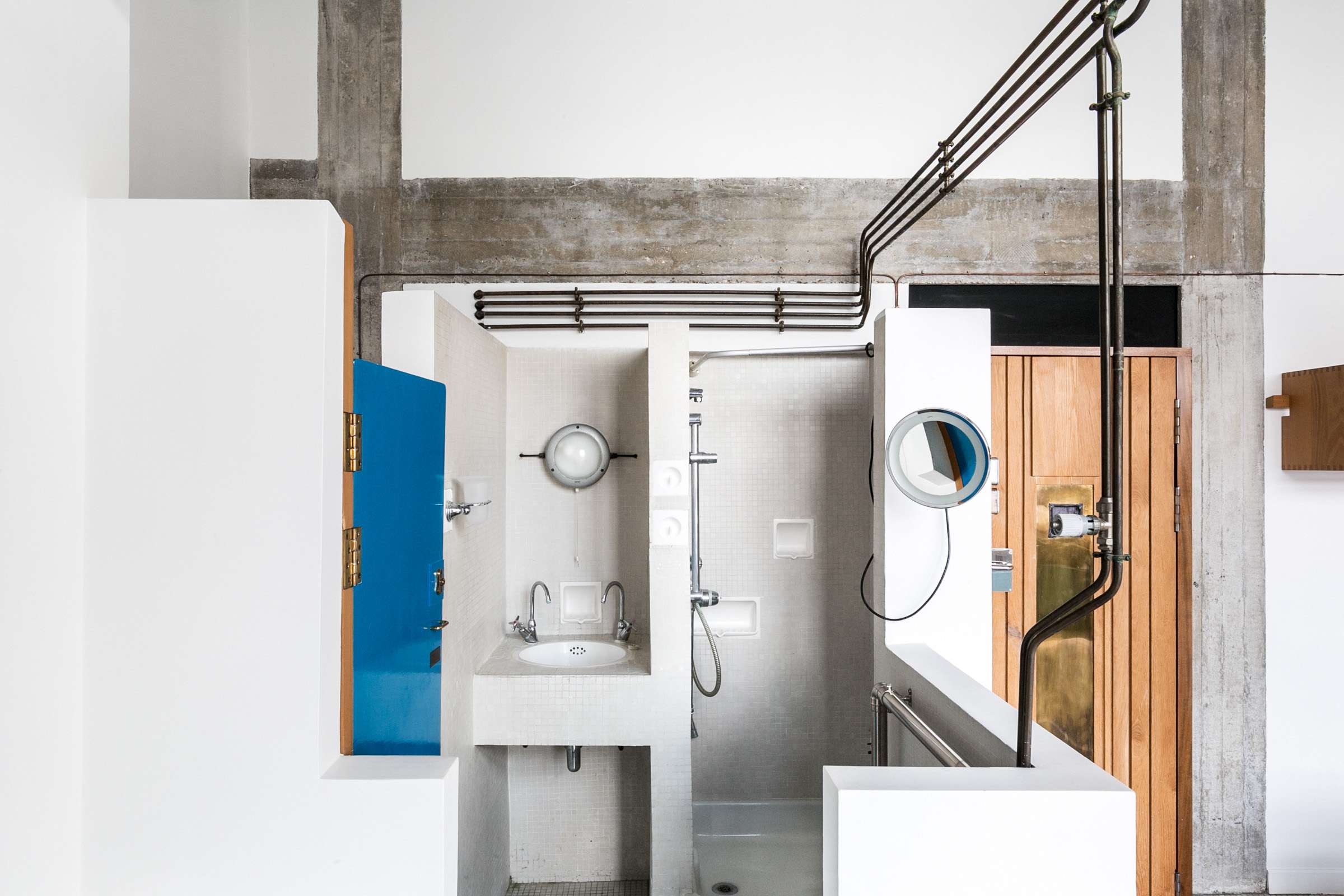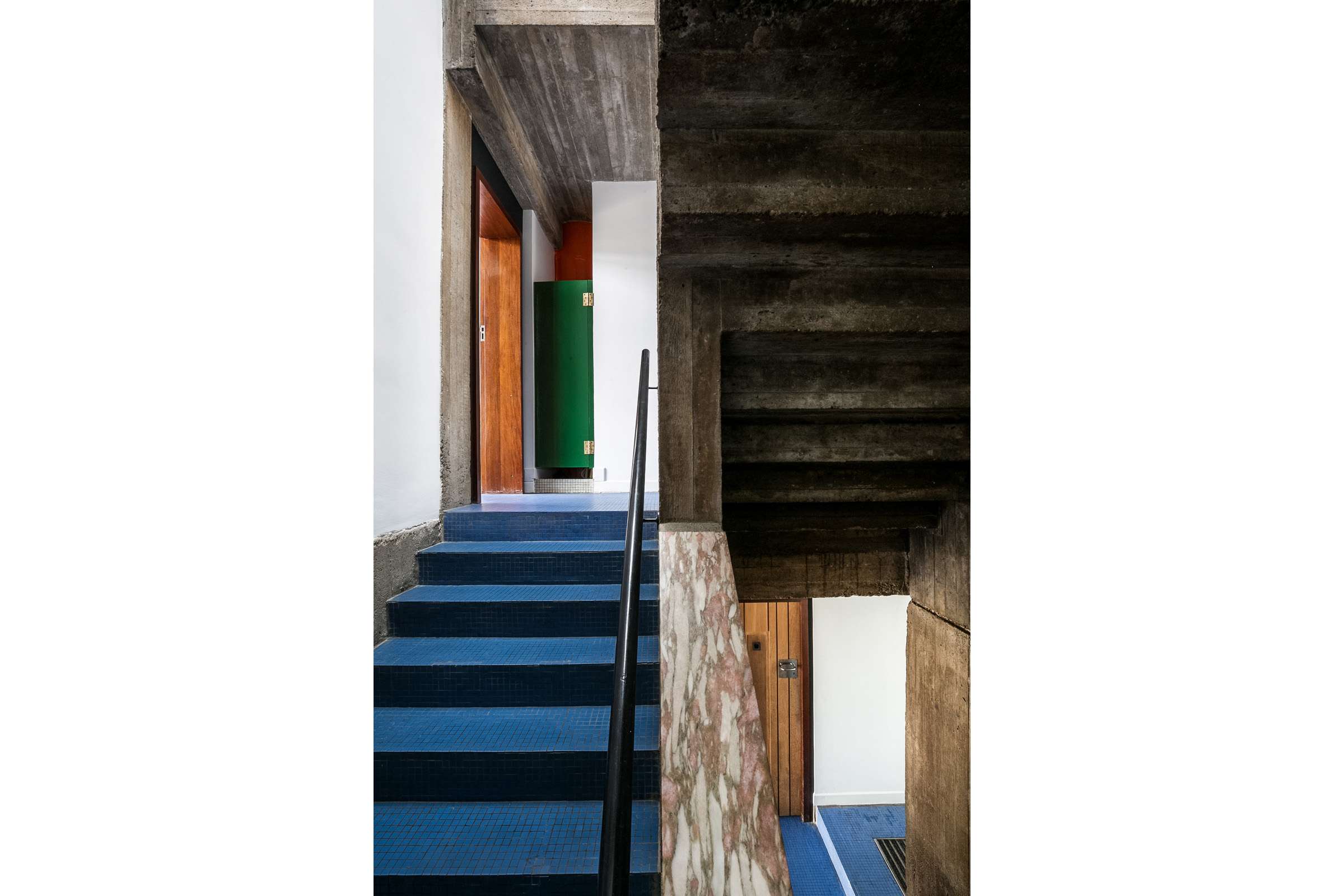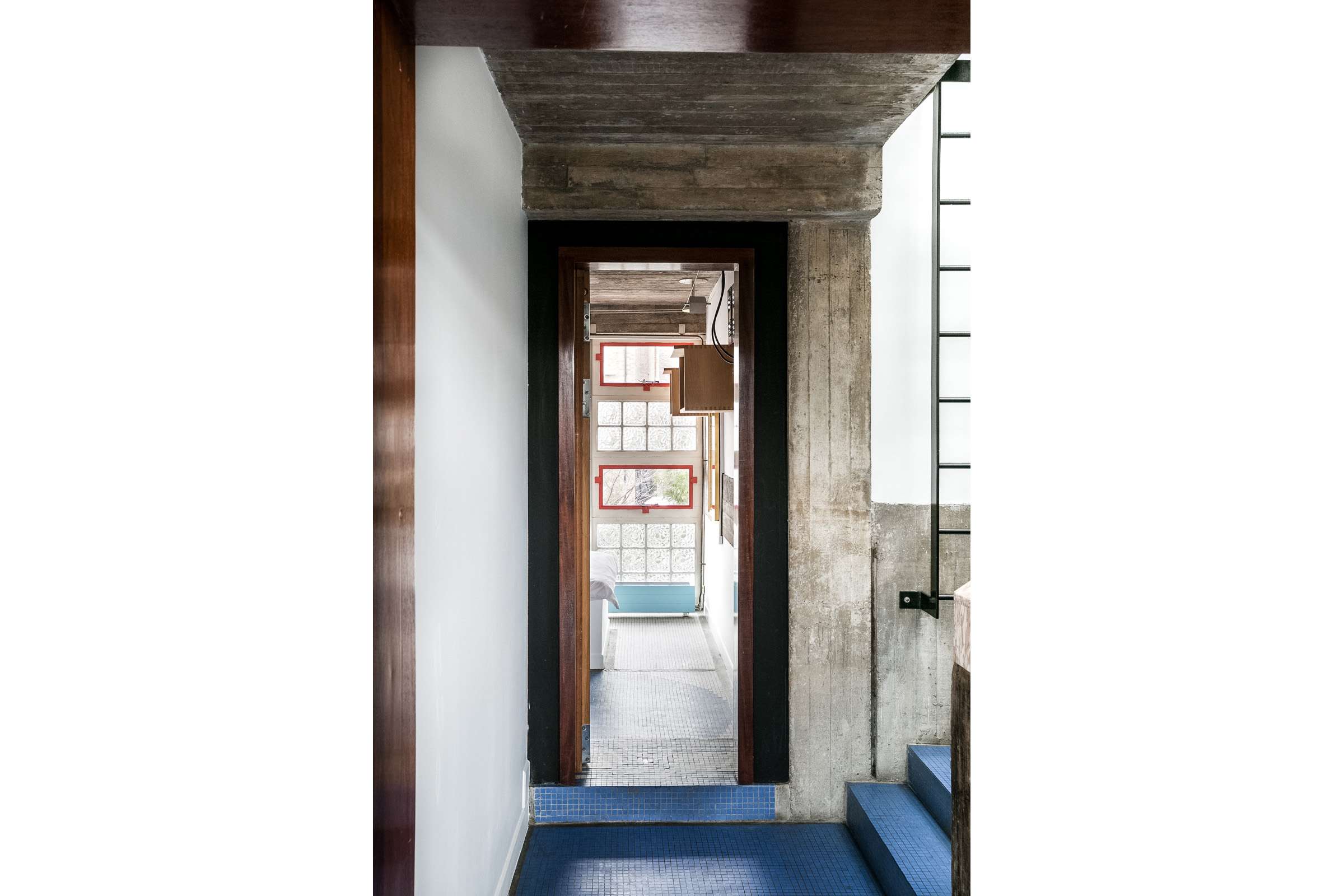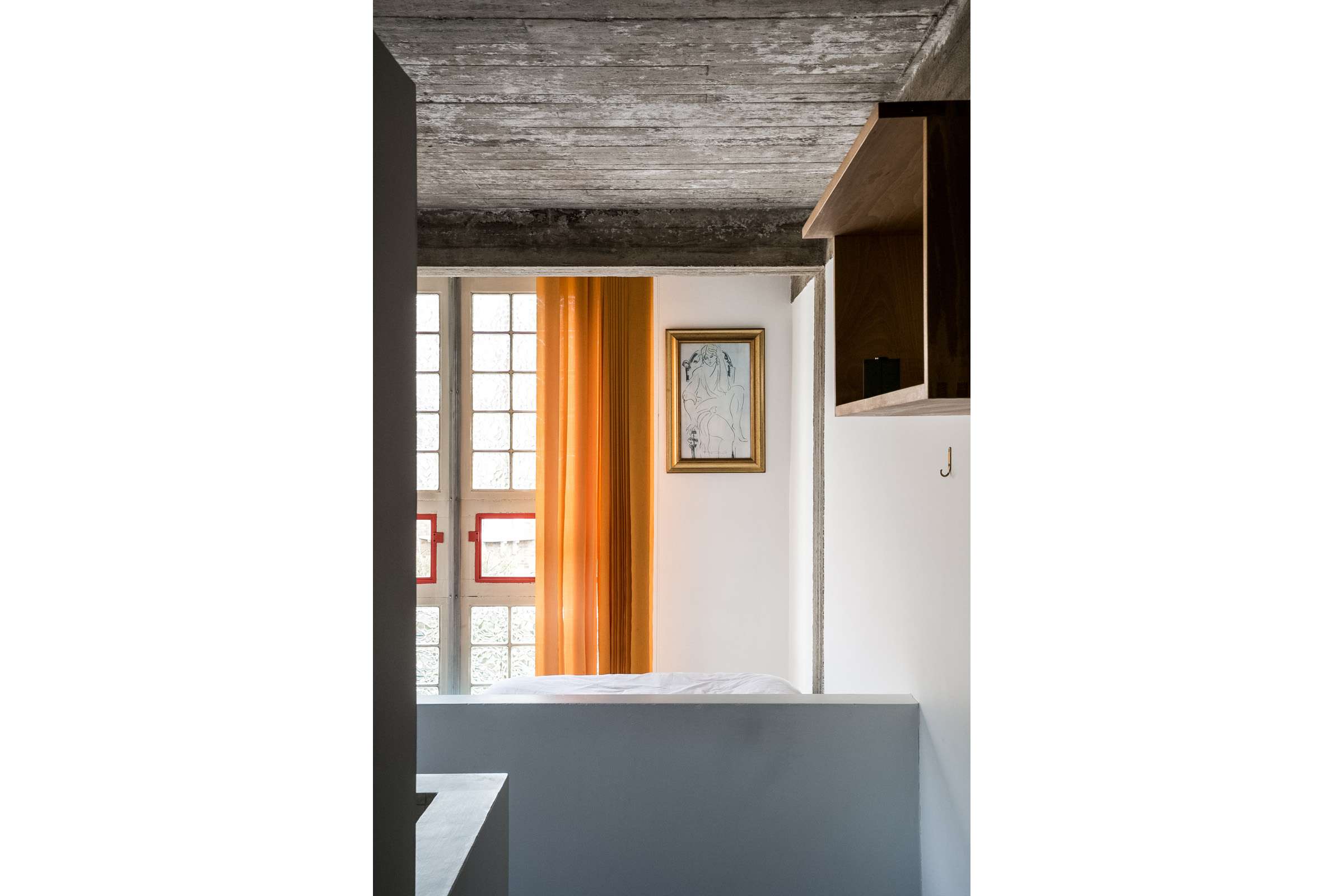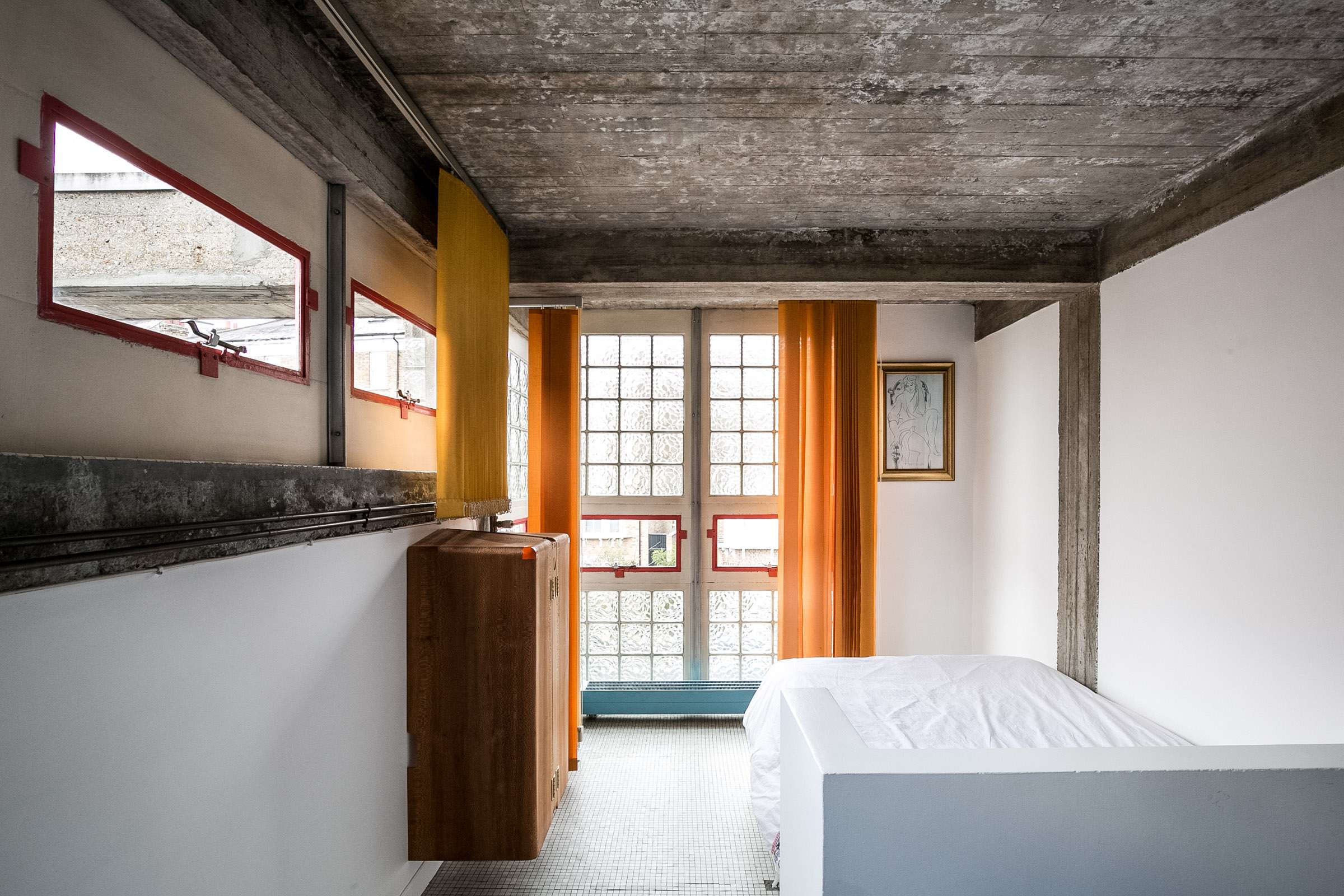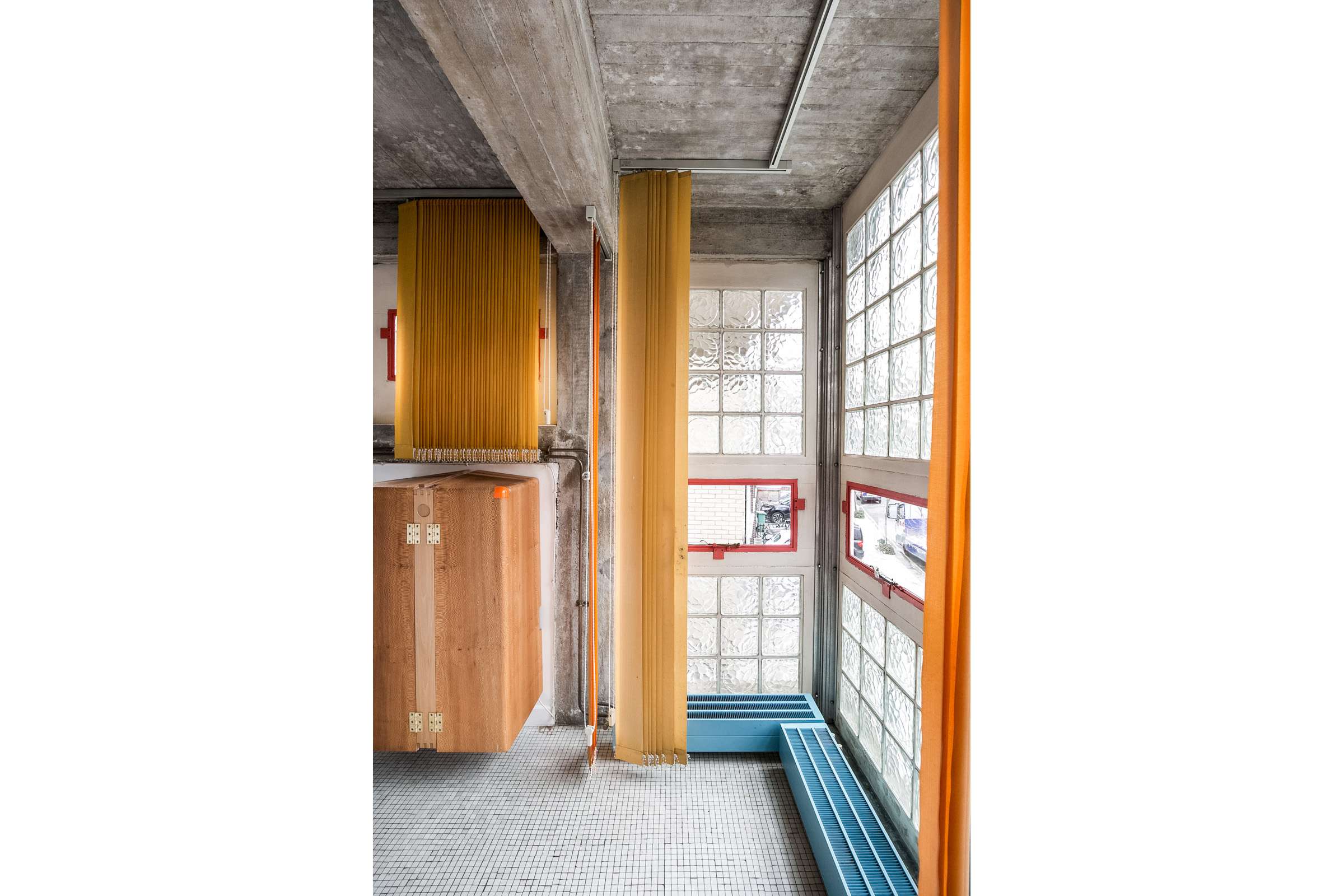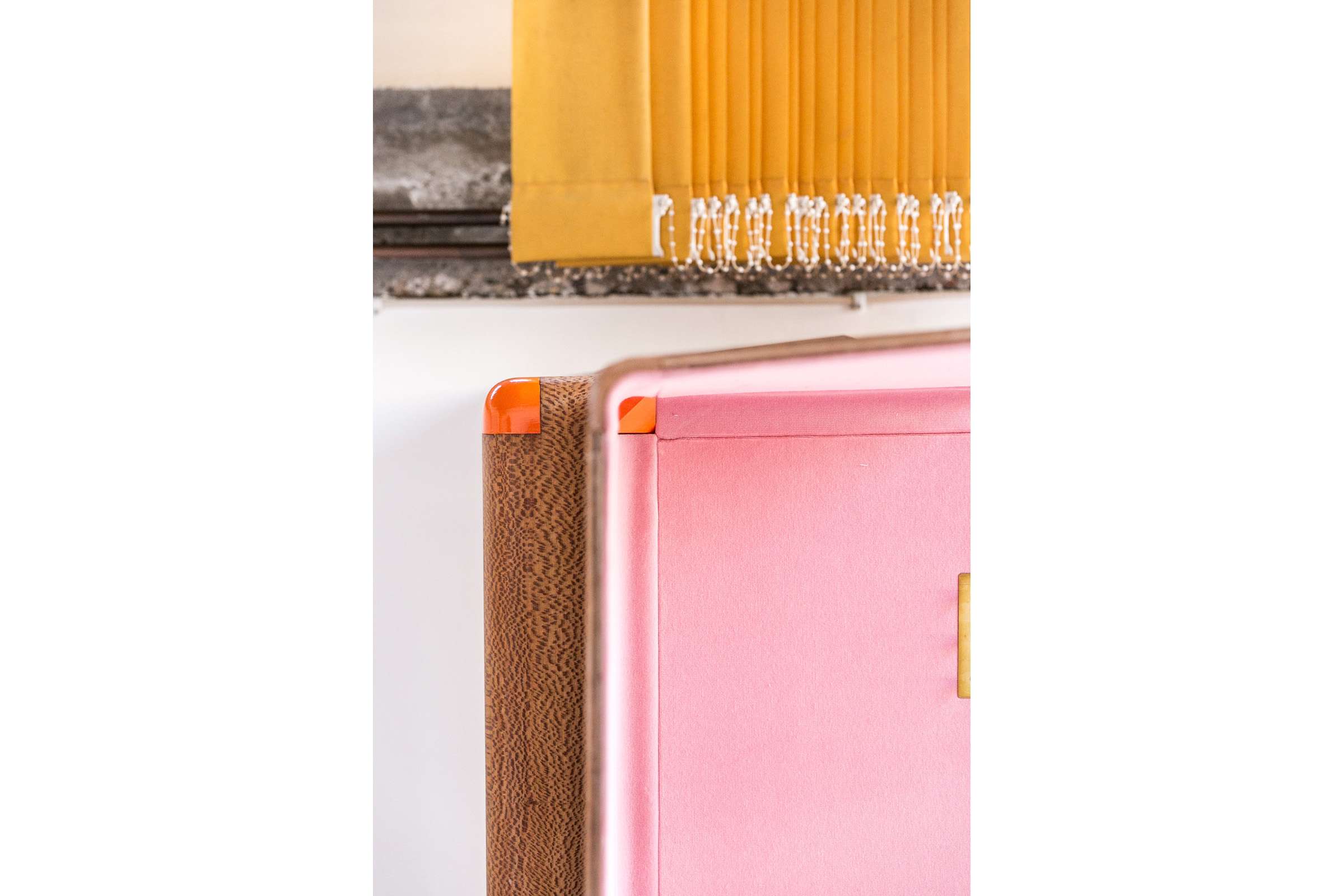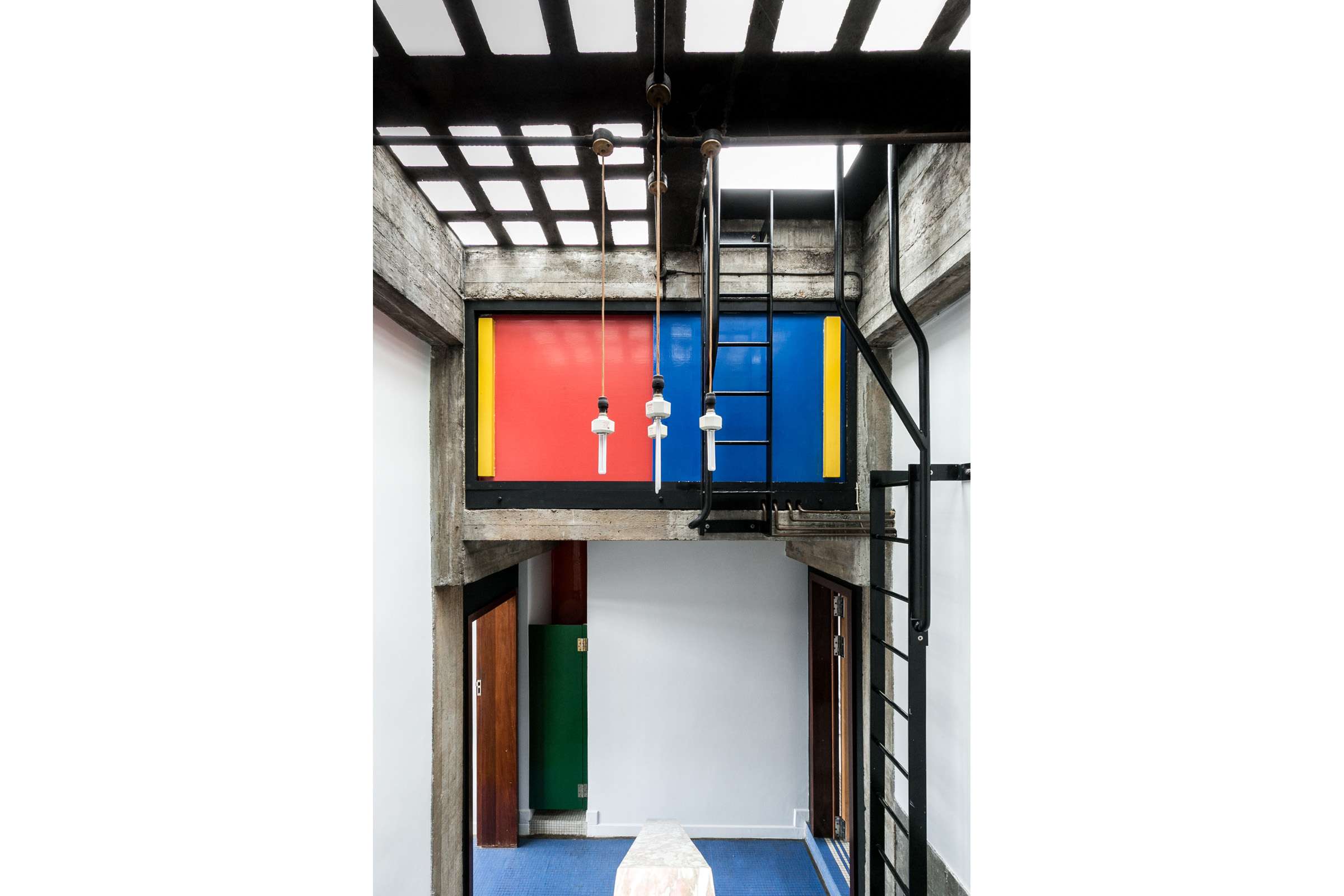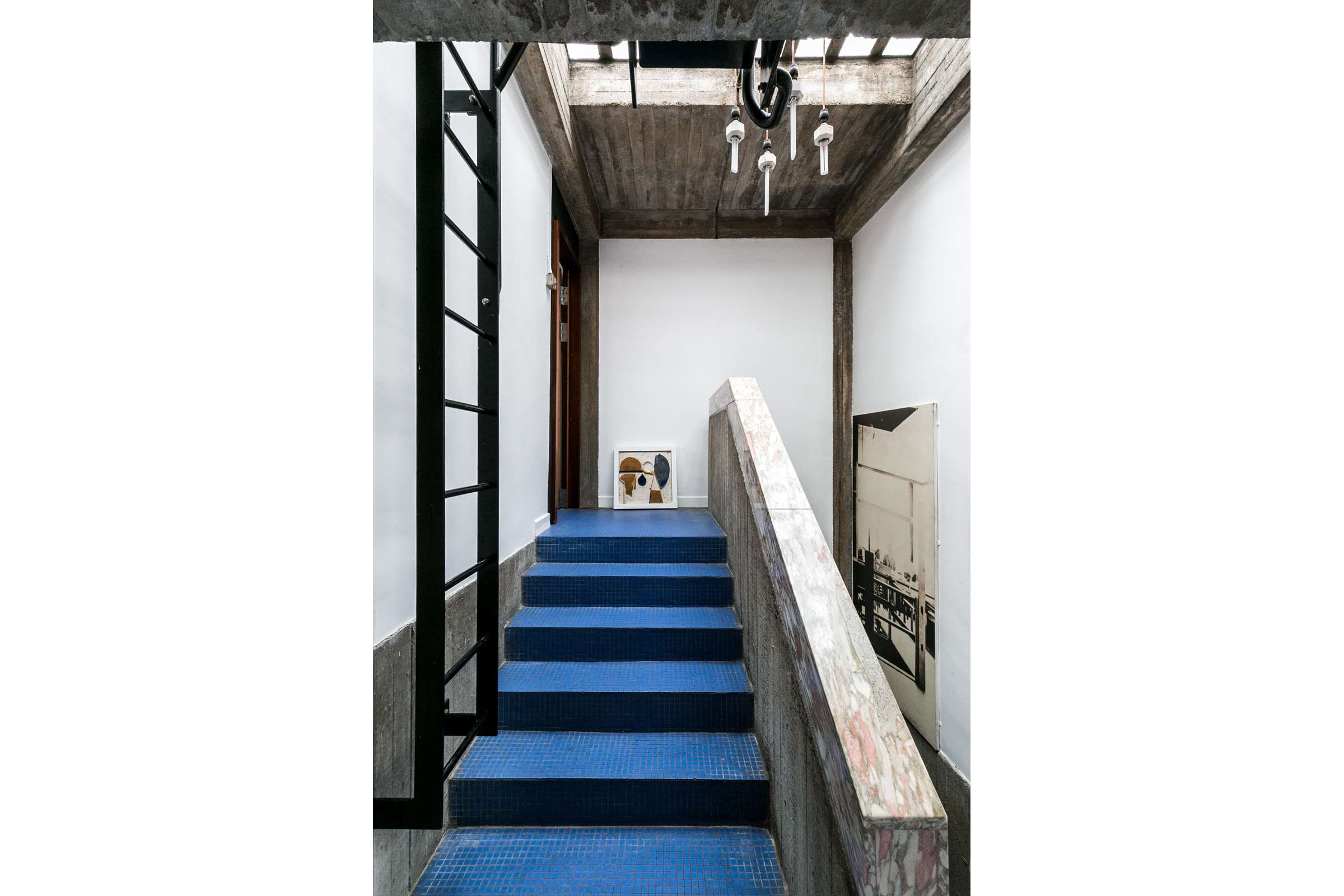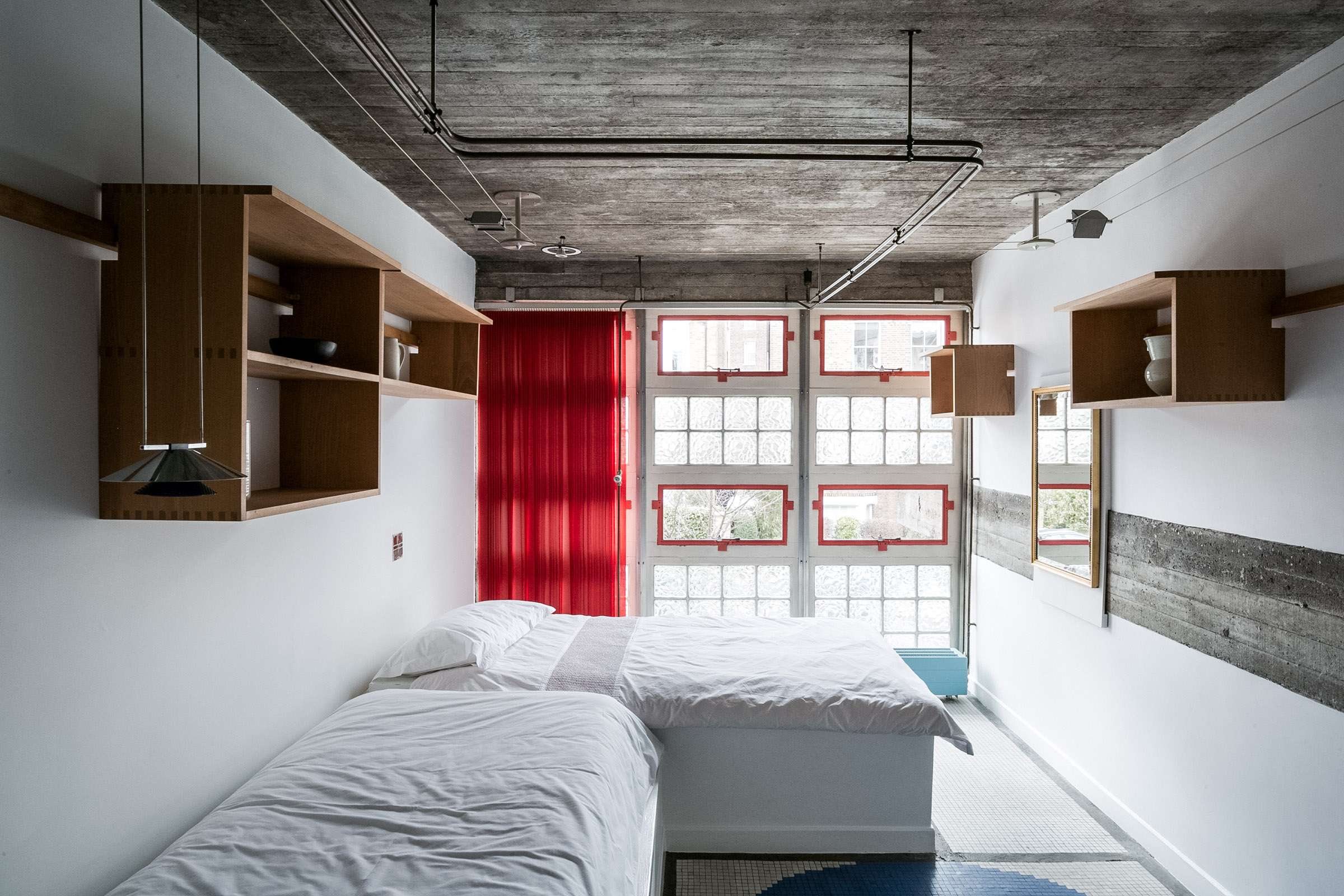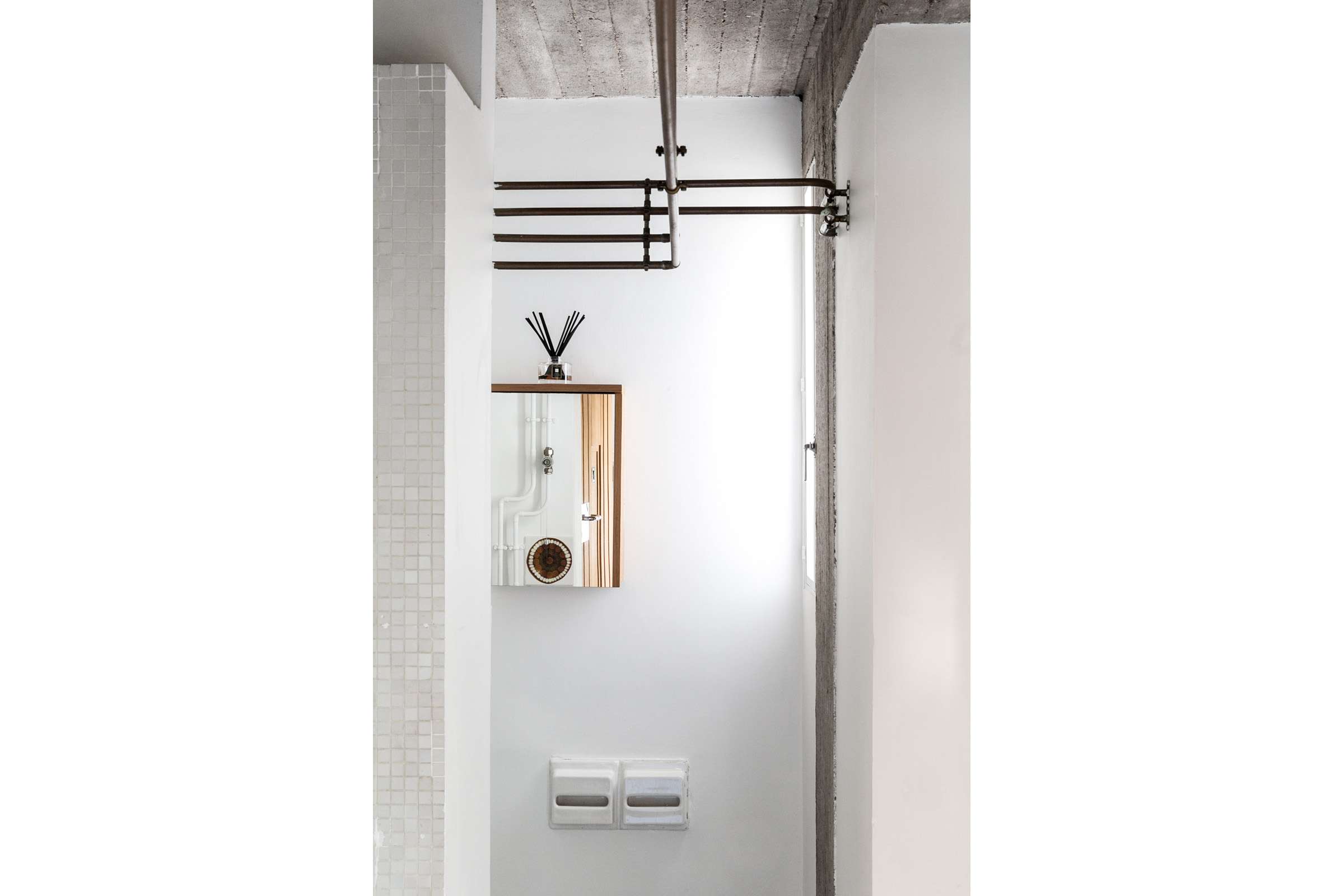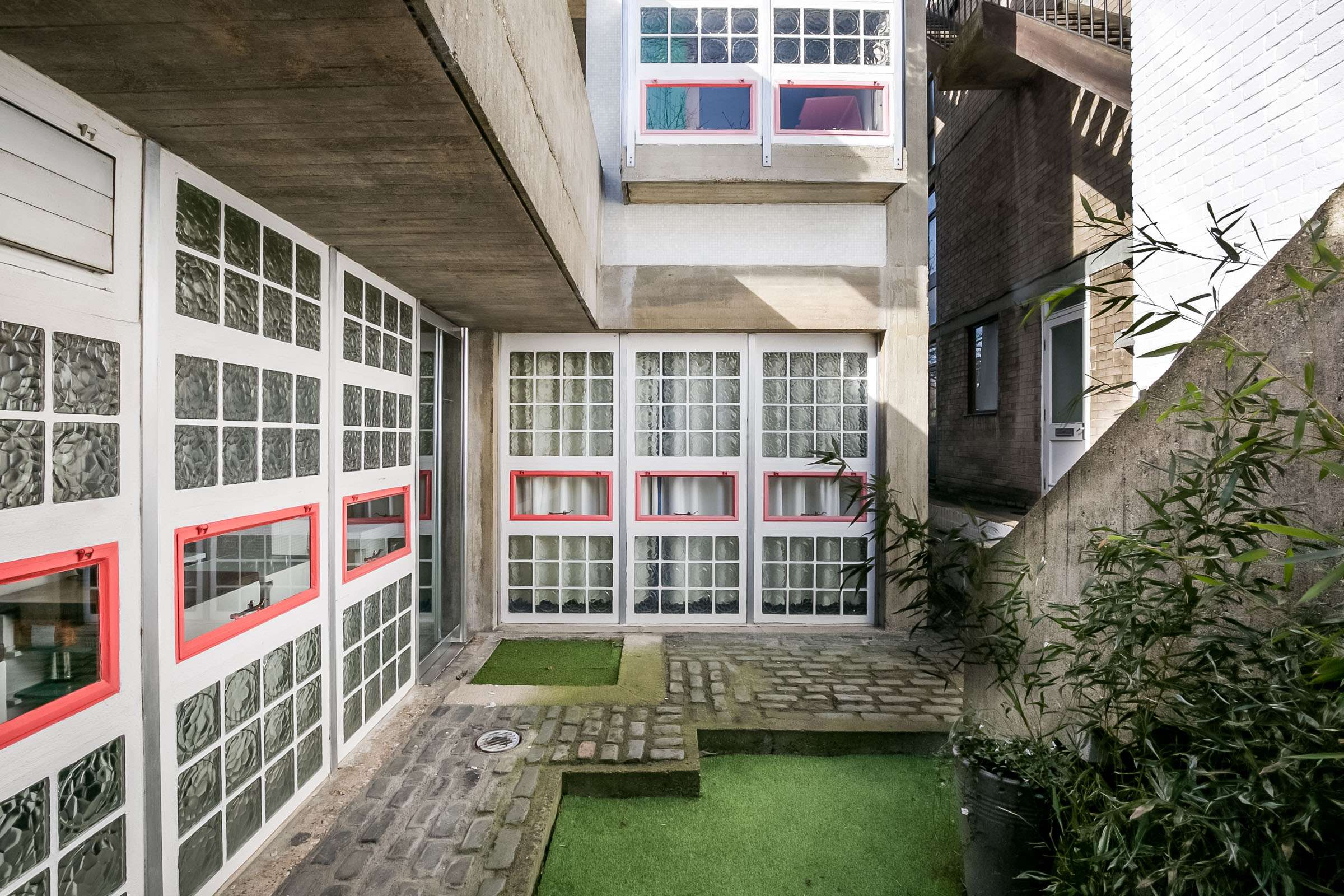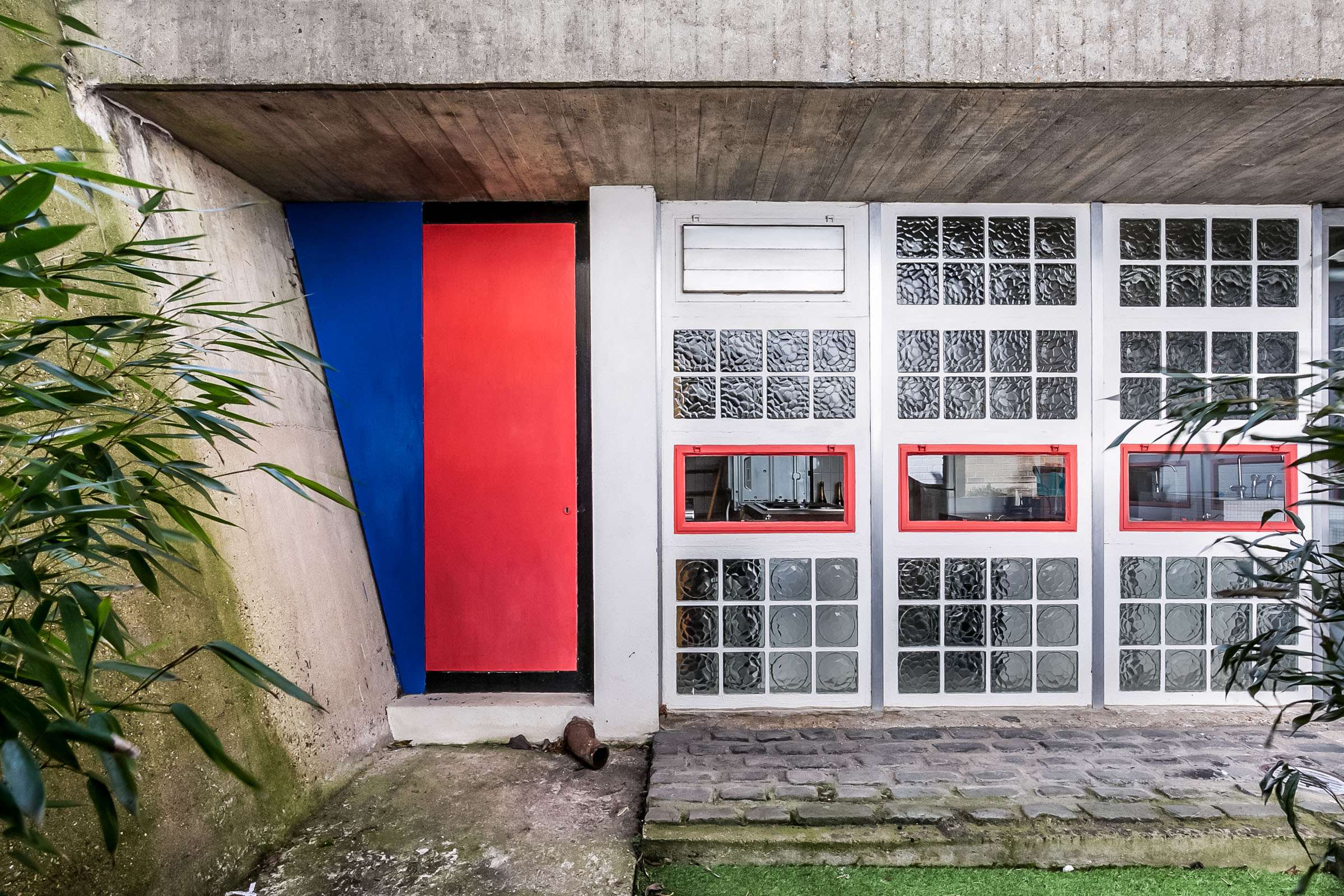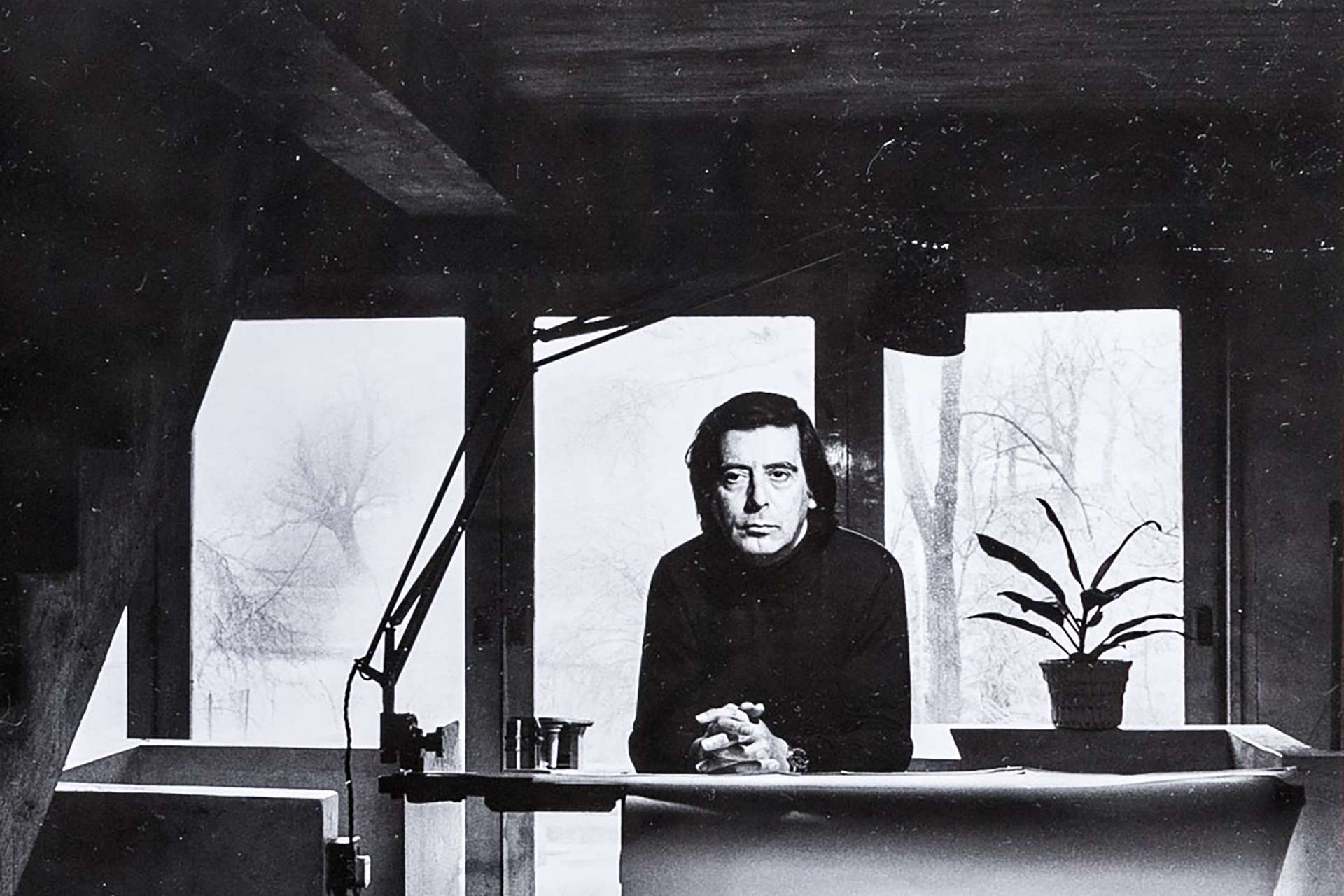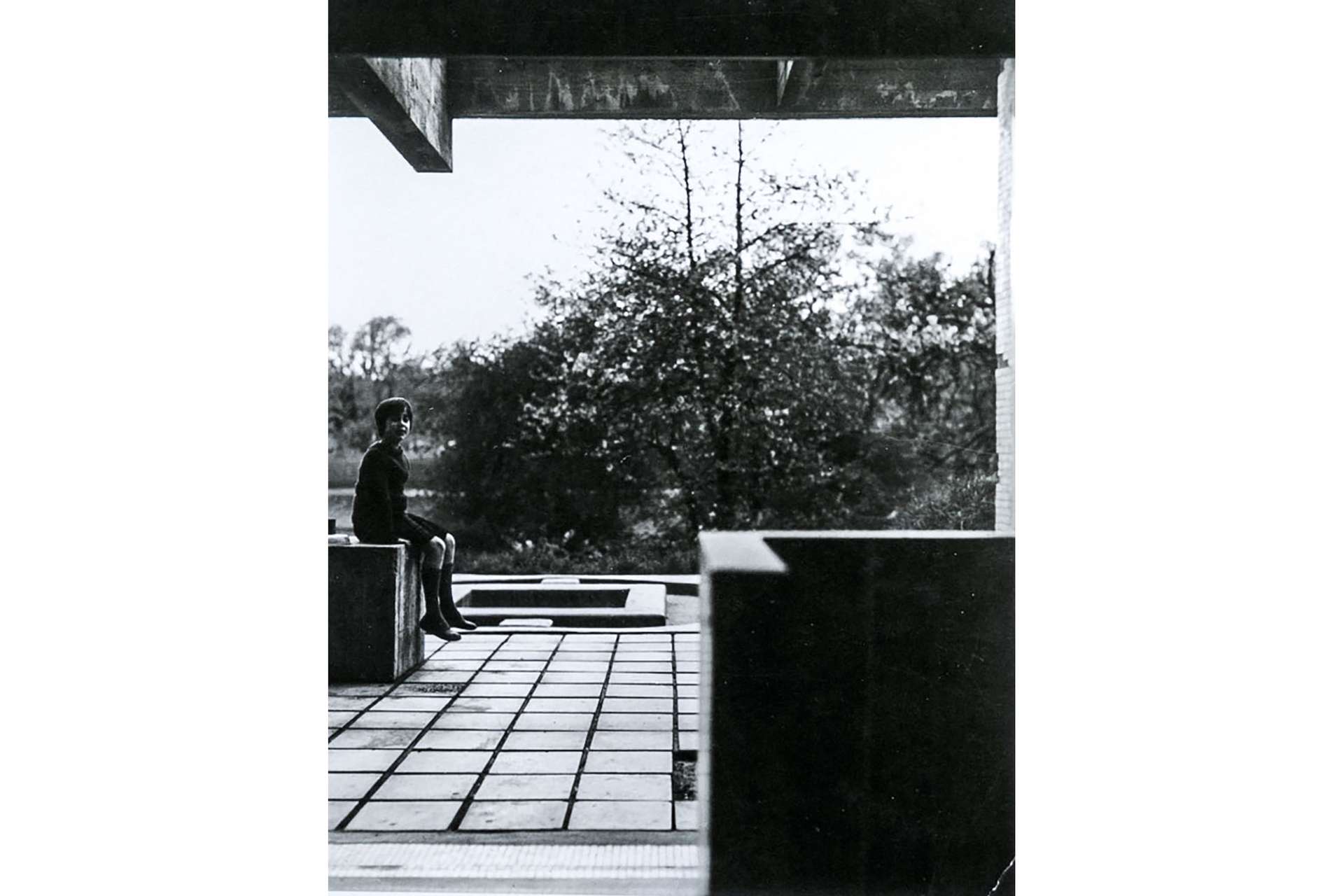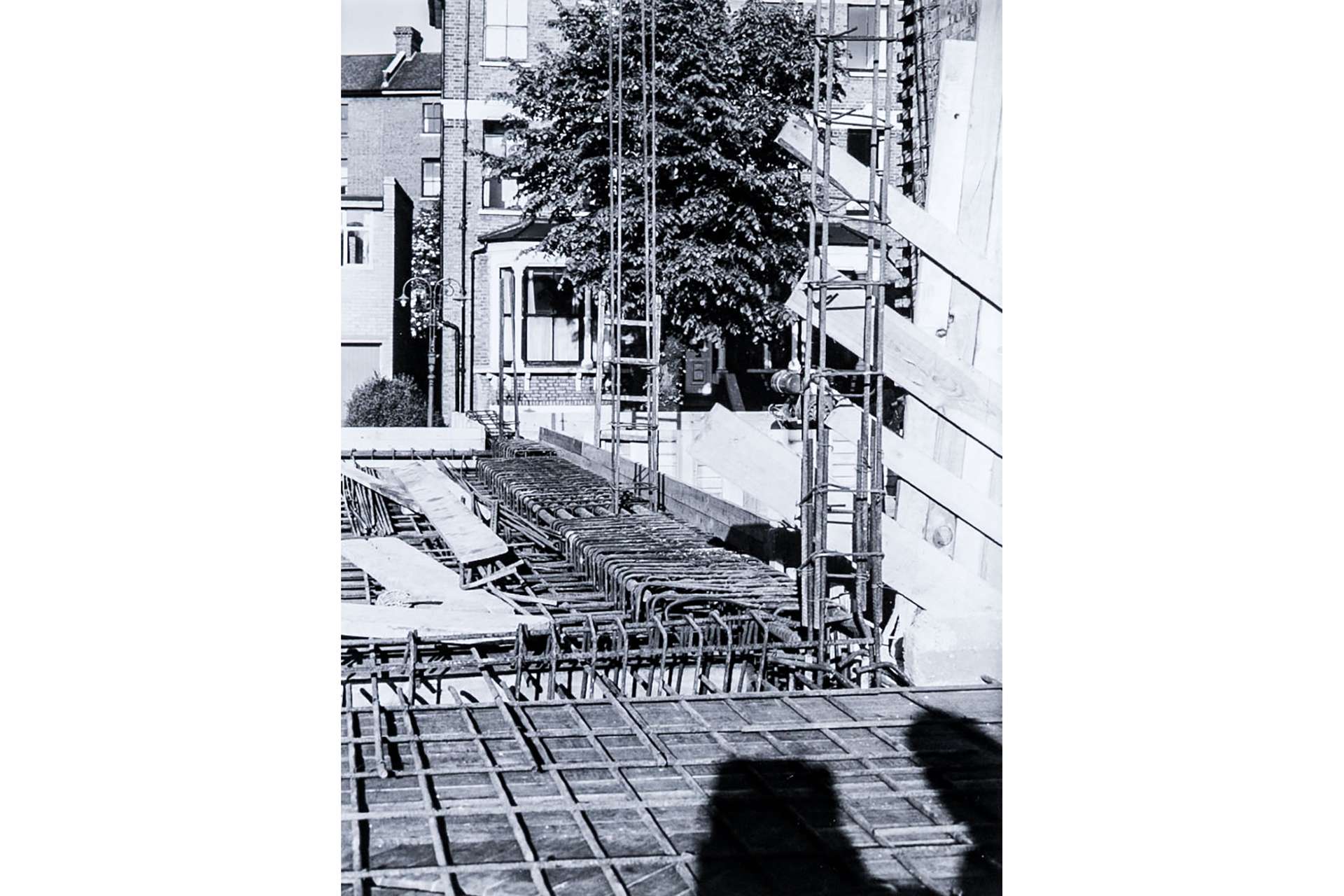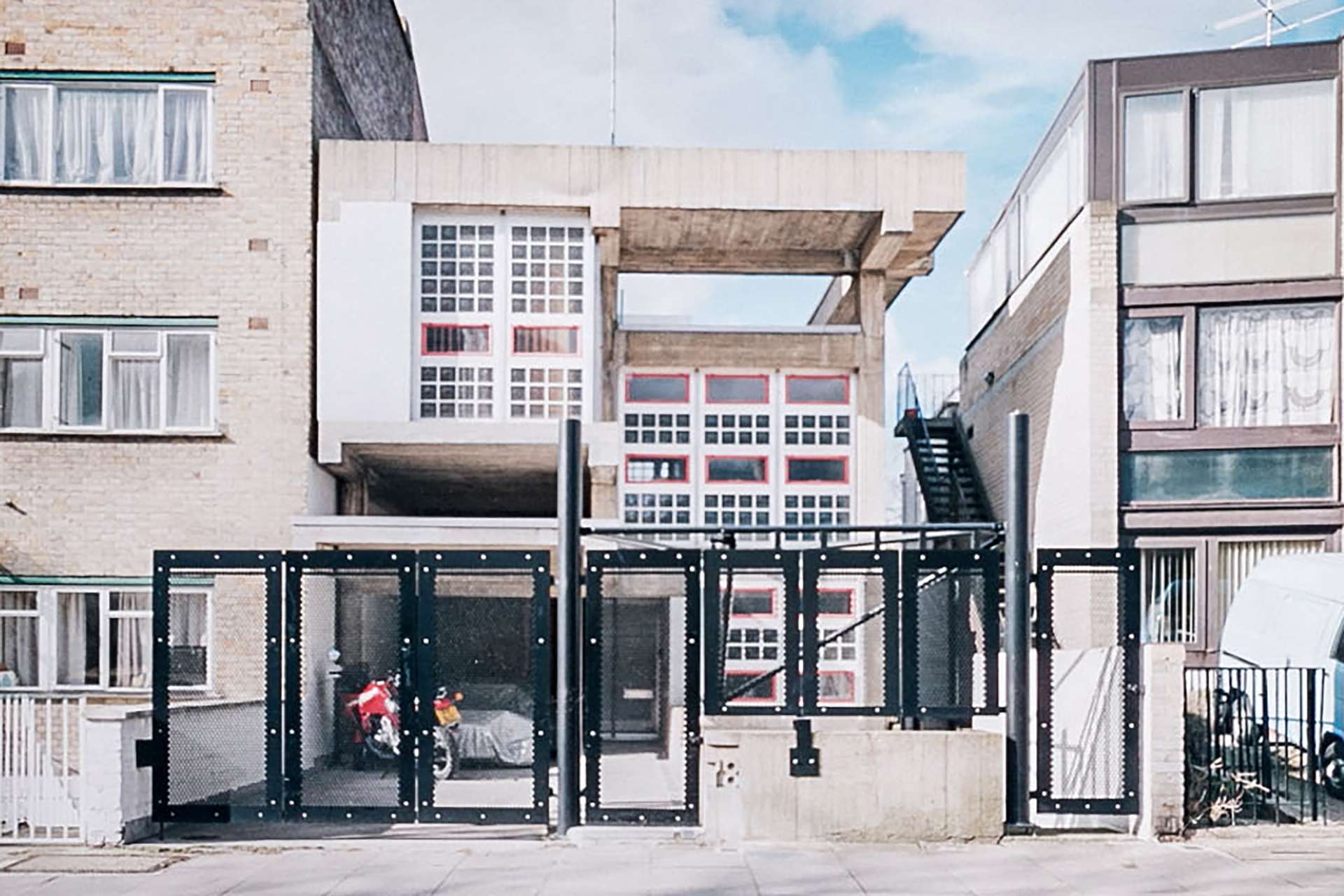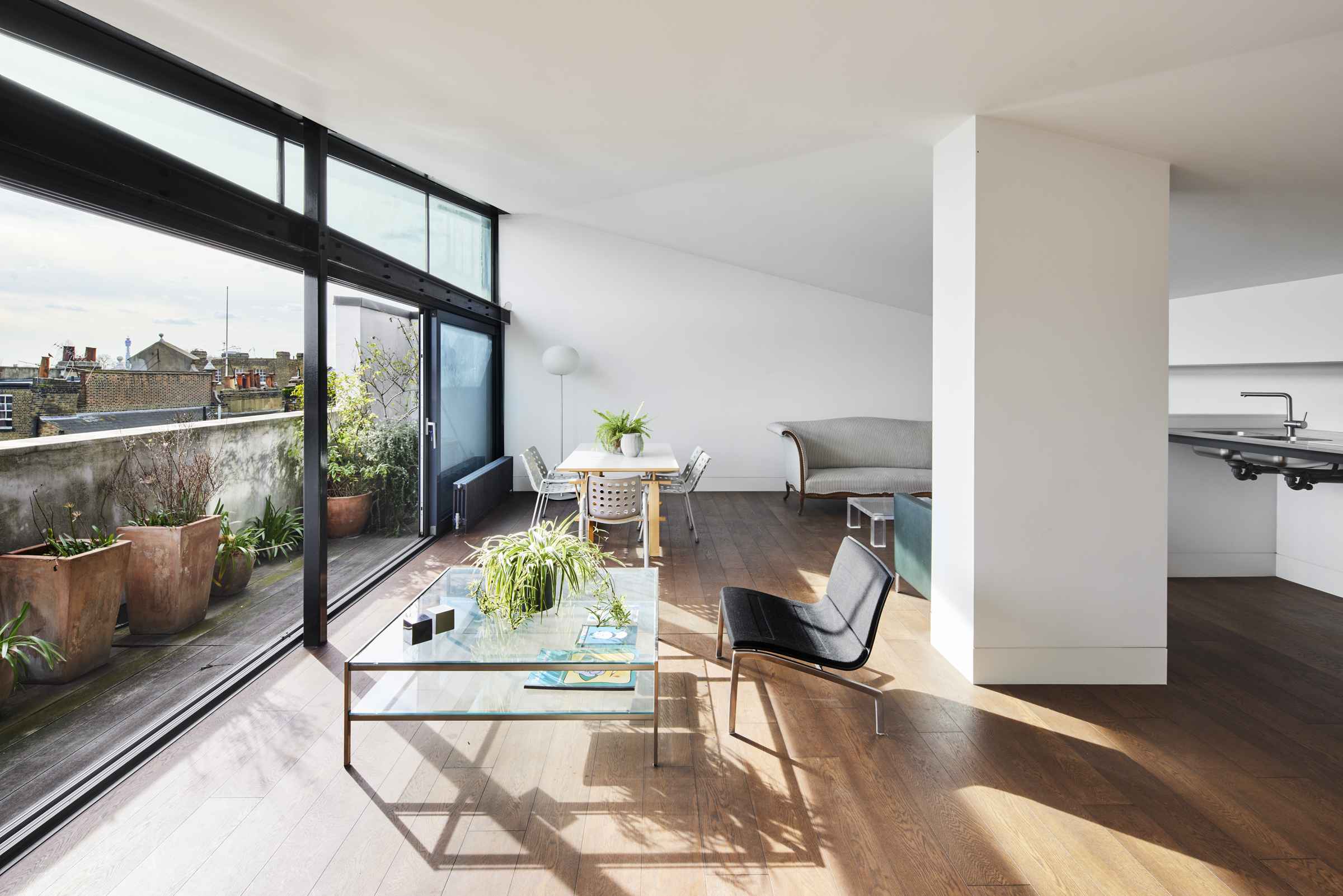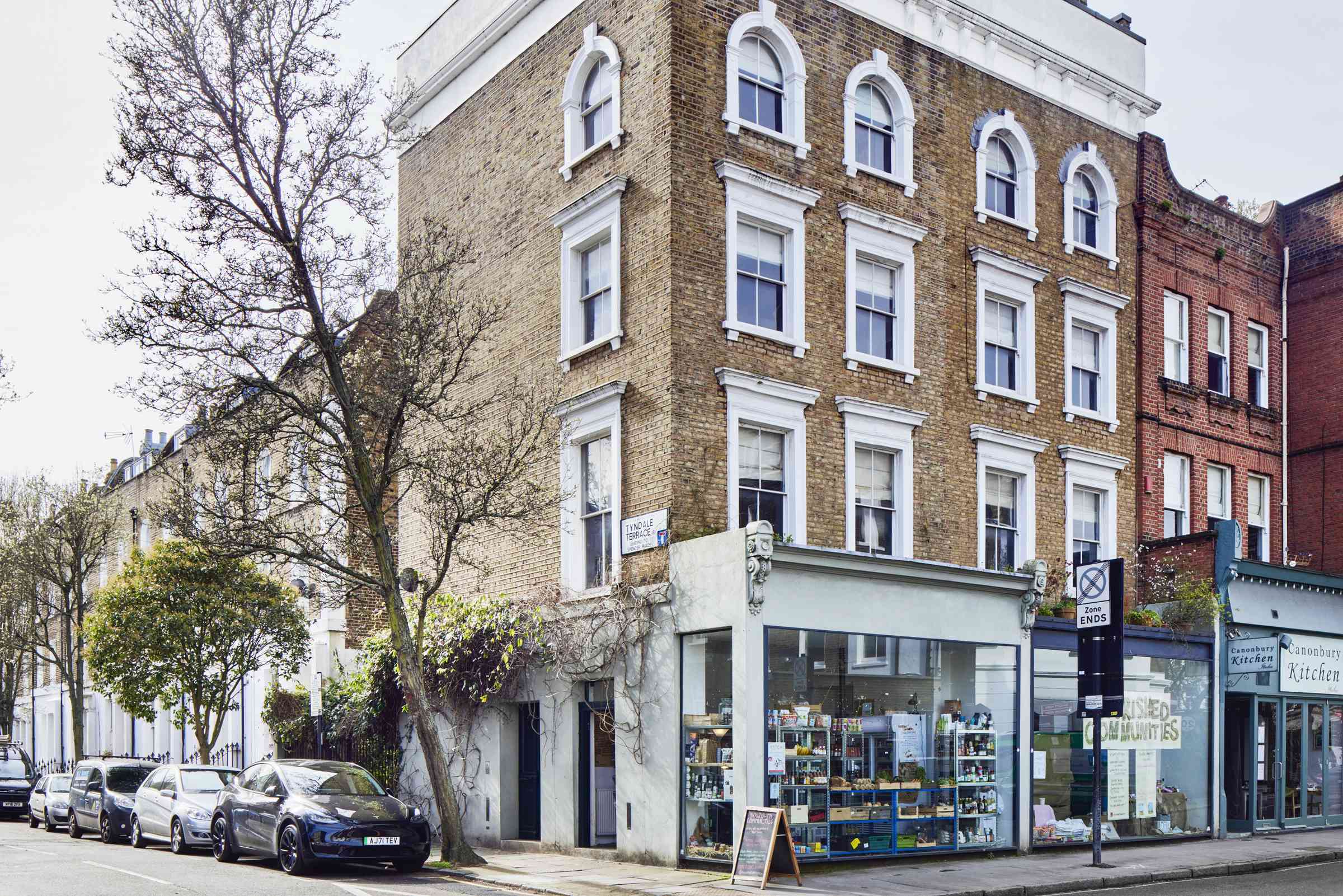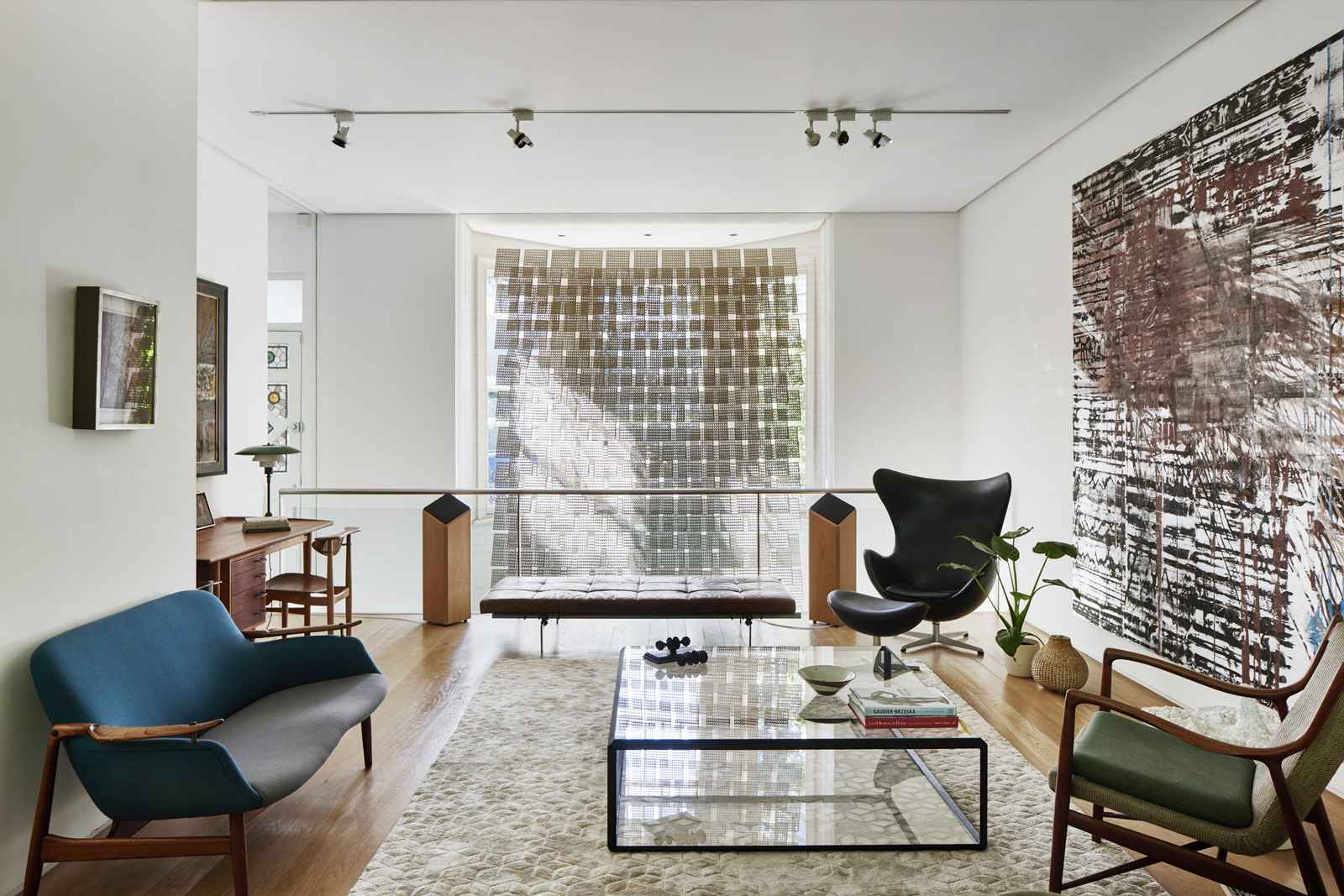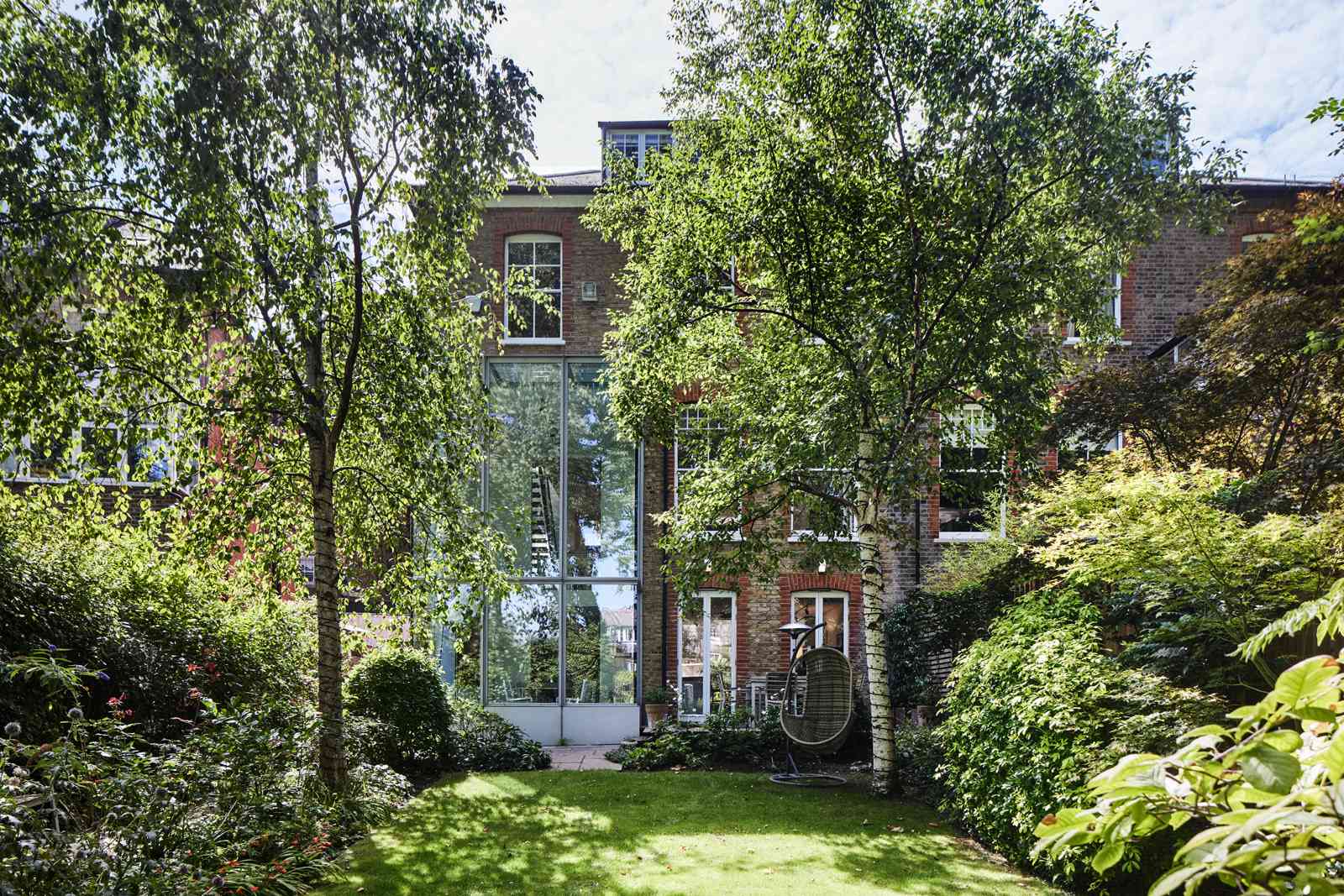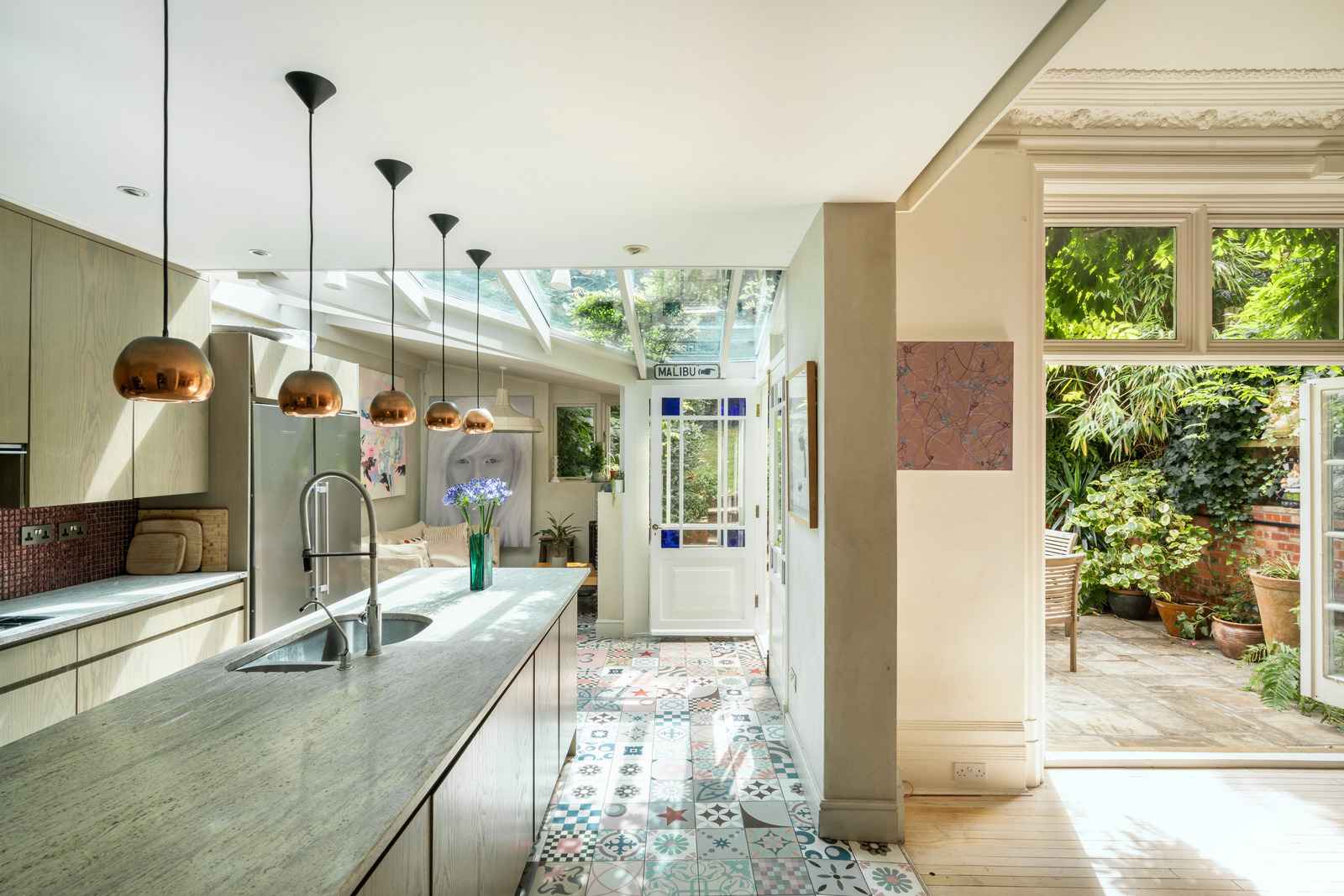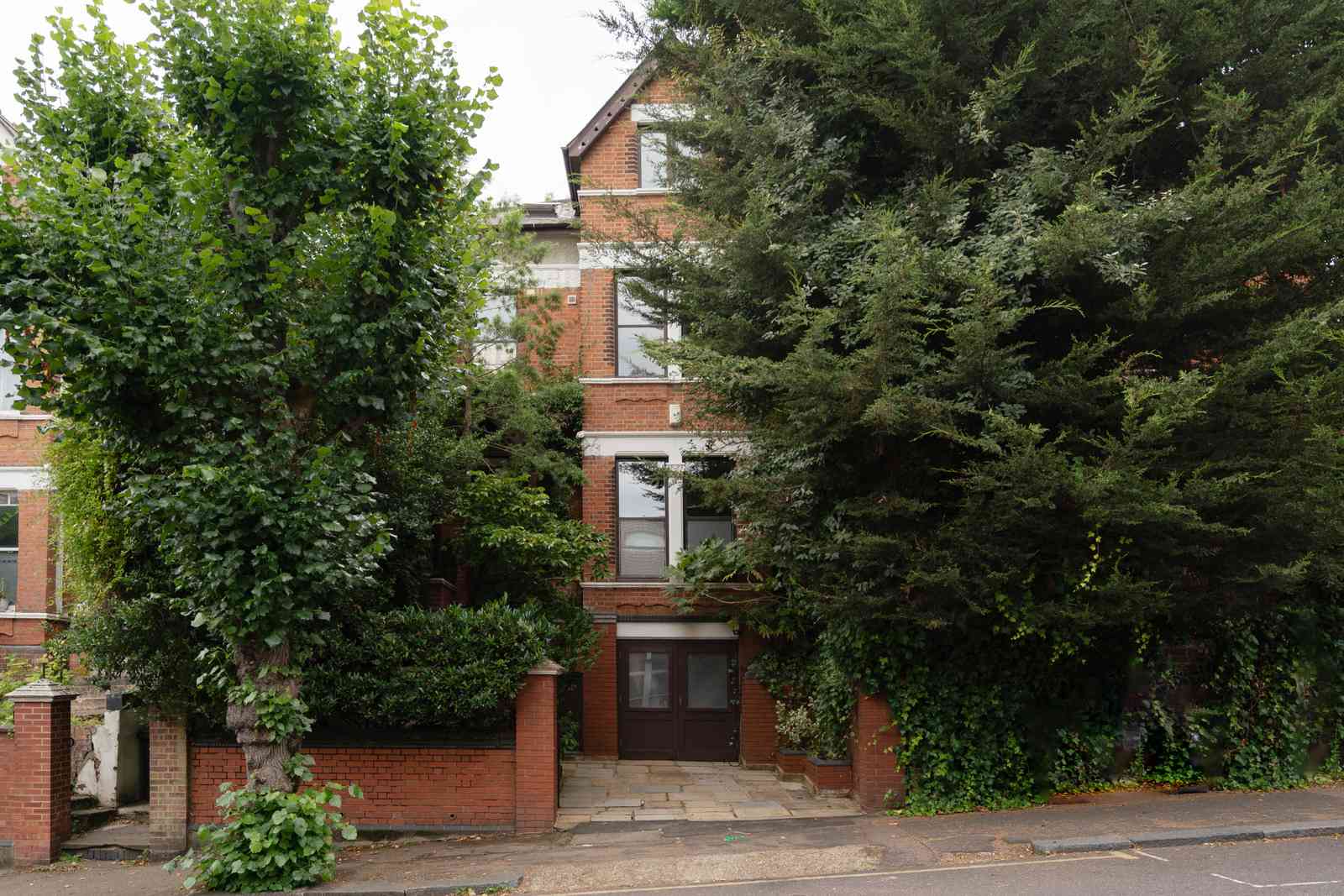Housden House
South Hill Park, London NW3
One of the great post-war Modern houses in London, Housden House was designed and built by architect Brian Housden for himself and his family between 1963-65. The house was given a Grade-II listing in 2014 by Historic England, representing a “completely unique piece of architectural vision and ingenuity that syntheses [sic] a great wealth of influences and ideas and is executed with an intensity and conviction that is entirely personal”. Presented to the market in beautifully original condition, this is the first time that the house has been available for sale.
History
Having graduated from the Architectural Association in the early 1950s, Brian Housden sought to build a house for his family that would draw on influences he had acquired from his studies, and a number of pivotal trips to some seminal houses across Europe.
By 1958, Housden had acquired a site next to a run of mid-century townhouses, built in 1954 by Howell and Amis, a bombed site that overlooked the southern end of Hampstead Heath. Housden set about designing a house for his family, which joined a great wealth of influences and ideas, three of which resonate in particular.
The first came from a trip to visit the Rietveld-Schroder house in Holland. As described in the Historic England listing: "…the Housdens met Truus Schroder-Schrader and Gerrit Rietveld at the house in Utrecht on which the two had collaborated in 1924. The Rietveld Schroder House was a built demonstration of the very close relationship Mrs Schroder sought with her three children, and the principal accommodation on the first floor is a single space defined by built-in furniture and folding screens. The Rietveld Schroder House is the principal-built monument of the de Stijl movement in art and architecture, in which the construction of the house is revealed as a series of interlocking planes with different elements painted in bright colours like a Mondriaan painting…"
"… At their meeting Mrs Housden admired Rietveld's furniture, and he promised her 'a collection'. Subsequently the Housdens acquired fourteen original pieces, made for them on Rietveld's instructions by van der Groenekan. The collection was given to them for the cost of the materials and transportation. The new house had thus to be designed to contain these important pieces."
The second significant influence occurred during the same trip to Holland, where the Housdens visited the Amsterdam Orphanage design by an international group known as Team X, that included architect Aldo van Eyck. The orphanage was designed for the use children, with different spaces and facilities for the varying ages, which resonated with the Housden’s drive to build a family house. Van Eyck’s use of fixed furniture, built in to the fabric of the house, was a concept that Housden had encountered and admired when studying the work of Adolf Loos. The technique arose from the idea of the house like a built landscape, or city. As Housden described the concept in his unpublished text The Imaginative Function of Buildings:“for the City is but one great house, or family, so every family, or private house, is a little city”.
Interested?
